#funk music: but what if i hit you with. a Groove.
Text
funk music has done infinitely more for my mental health and wellness than any fucking medication and that is a god damned fact
#me: my meds make me numb now and i am miserable#funk music: but what if i hit you with. a Groove.#me: well god damn youve caught my interest....#anyways if anyone wants my anti depressant funk playlist hmu#i do have to adjust my current funk playlist or just make a new one im not sure yet
0 notes
Text
1990s Drum n Bass Playlist
Back to the Sunday night electronic playlist-posting mines for the next good while. This week I've got a little update to my 90s drum n bass playlist, with something that's very dark and something that's much, much lighter.
The dark one comes courtesy of a guy from the UK called Ambush, whose career only consisted of a couple 12-inches and an album between '96 and '98, and is not to be confused with *The Ambush,* which is an alias of German electronic music legend Oliver Lieb. Ambush made his debut with a 12-inch called Gain on Possible Records, a dark dnb label that was founded by Mick Harris, who was the former drummer in famed death metal band Napalm Death.
Taking up the A-side on Gain is a tune called "Tracking," which would later find its way onto a Possible double-disc comp called Sonics Everywhere in 1997. "Tracking" is this steadily burrowing piece of filthy subterranean grime, with this constant no-give snare hitting on every other beat while a simply demonic, distorted sub-bassline rumbles mercilessly beneath it 😈; potential theme music for the single-most evil entity in the universe. Only has ~1,100 plays on Spotify.
And for the yang to "Tracking"'s Yin, we have something pretty dang unique. UK future jazz-funk band RSL are not known for making drum n bass, but it appears that, three years prior to their debut release, they first appeared on a South African compilation in 1998 called ReRooted: Beatz From Da Ground Up, with "Elungelo." This is a song that appears to be sampling soulful traditional African folk vocals and then pairs them with beats—first, a nice and chill-grooved, bare-bones trip hop one, and then a sudden shift to dnb. And to be honest, I kinda dig the trip-hoppy portions more on this one, but if something has a considerable amount of drum n bass on it, then it automatically gets categorized as a dnb tune; those are just the rules. Around 9,100 plays.
Ambush - "Tracking"
RSL - "Elungelo"
And for the YouTube version of this update, I was able to add those two songs to it too, but I also added another one that can't be found on Spotify as well. And this is another dark one, from a master of those dark dnb arts himself, Technical Itch. In '98, this Birmingham, UK native applied his craft with a remix of Manchester, UK act Perfect Combination's "Remember." Scratchy and blown-out snares, wormy bass squelching, and an occasional eerie synth to remind you where you are, which is a place that you really need to escape from, pronto 😰. This remix has appeared on a double-12-inch called Partisan Volume One, one of the first releases in the catalog of Partisan, an ultimately short-lived label that was launched after a group of staffers acrimoniously split from dnb juggernaut Moving Shadow. Song has a little over 4,800 plays on YouTube across a few different uploads.
Perfect Combination - "Remember (Technical Itch Remix)"
And this playlist is on YouTube Music too.
So this update now brings us to 13 songs that total 84 minutes on Spotify, but over on YouTube, we're now at 30 songs that total 191 minutes! There's just so much more great, obscure 90s dnb in that YouTube one, including a handful of cuts from a compilation that's not even listed on Discogs called Now What Kind of Music Do You Call That?
And if you want something shorter, I've also got a couple dnb playlists that are specific to a certain year from the 1990s:
1997 Drum n Bass: YouTube / YouTube Music
1998 Drum n Bass: YouTube / YouTube Music
Next week, some breakbeat!
Enjoy!
More to come, eventually. Stay tuned!
Like what you hear? Follow me on Spotify and YouTube for more cool playlists and uploads!
#drum n bass#drum & bass#drum and bass#dnb#d n b#d and b#d&b#d & b#dance#dance music#electronic#electronic music#music#90s#90s music#90's#90's music#playlist#playlists#spotify playlist#spotify playlists#youtube playlist#youtube playlists#youtube music playlist#youtube music playlists#Spotify
13 notes
·
View notes
Text
Alright so here is another set of reviews. This time it's my brother who is very much into fun and goofy music so enjoy this selection from my brother Jason!

The Aquabats - Fury Of The Aquabats!
The Aquabats are living cartoons. Concentrated essence of childhood fun. They are a child friendly ska punk Gwar. Even though this album is from long before their purely kid oriented Yo Gabba Gabba! days there is still a distinct family friendly atmosphere to The Fury Of The Aquabats! It has a similar energy to Homestar Runner or The Muppet Show where it is kid friendly media made for adults. And, like those examples, it works because they are having so much goddamn fun with it. It is deliberately and pointedly stupid. Magic Chicken is a song about chicken. I'm laughing because it's funny. The Cat With Two Heads has the line "I was in my laboratory creating what i thought would be we something great for the world, a two headed cat. You can pet one kitty's head and pet the other kitty's head, but little did i know the power of atomic energy would create a
two headed man eating monster!"
So have I convinced you to listen to a 90s ska album yet? Because this is a very pure example of the genre musically. It has the pop punk pacing and fast paced ska rhythm and the horn section and everything. It does admittedly have some, uh, genre diversions I guess I'll call them. Attacked By Snakes is a tango song and Lobster Bucket is a zydeco type thing sometimes. The MC Bat Commander is a perfect vocalist for this kind of music. He's so goofy, but you never really get the impression that he isn't taking it seriously. Or at least he is meeting the music and lyrics on their own terms. It is very endearing. Plus this album has a little bonus that other Aquabats albums lack. Do the drums sound like really competent to you? Like way too much for a pop punk band? Yeah that's Travis Barker of Blink-182 fame. He's probably the most talented punk drummer and he lends a fantastic energy to these songs.

Deee-Lite - World Clique
If you know Deee-Lite already then you probably know them as the one hit wonder who did Grooves Is In The Heart. Well this album deserves more recognition than just having produced a hit single. Deee-Lite channel the 60s flower child throwback aesthetic harder than any other artist of the 90s and they bring that energy to house music. Now I feel like a lot of electronic music fans start to dismiss an artist the minute they hear pop vocals, but this is totally unfair. Dee-Lite use vocals the way they would use any other instrument on a house track. The repetitive vocal lines mesh with the piano samples, drum loops, and funky bass.
Speaking of funky bass, this album has a few performers with a pedigree. Three former Parliament-Funkadelic members feature on this album, trombonist Fred Wesley, saxophonist Maceo Parker, and bass legend Boots Collins. Plus A Tribe Called Quest member Q-Tip gets a verse on Grooves Is In The Heart. That element of P-Funk goofiness is apparent in their peace and love lyricism and overt cheesiness. And while a lot of memorable tracks like Try Me On and Groove Is In The Heart are more hip house to pop oriented the rest is populated by songs like What Is Love that show off a more traditional house style. The album has enough variety and good enough pacing that you don't need to throw these songs into a DJ mix when you can just throw on this whole album and get the same experience.

Shonen Knife - Brand New Knife
I can't pretend this is my absolute favorite Shonen Knife album, I'm more of a Burning Farm or Pretty Little Baka Guy kinda girl. But Shonen Knife doesn't exactly disappoint here either. There's a simplicity to their lyricism and playing that leaves little room to actually fuck it up. The punk rock meets 60s girl group sound feels like it should be influenced by cuddlecore musicians except for the fact that Shonen Knife's sound predates that movement by a decade. This album is smack dab in the middle of the height of that scene though (low heights admittedly) and there is definitely a bit of a cleaner sound than on previous Shonen Knife records that reflects the styles of the time and the rising success of the band. I don't personally believe that higher production quality does much for them, but as long as they are still singing about food and other things that make them happy Shonen Knife will always be a treat to listen to.

Bitch Ass Darius - Follow The Sound
This is the greatest DJ mix ever. Booty bass or ghetto house or ghettotech or whatever you want to call it is a chatic style of house that adopted a lot of hip hop tendencies and then ramped things up to eleven by using the most sexually explicit lyrics possible. Follow The Sound is the most ridiculous example of this already ridiculous genre.
Bitch Ass Darius is an anomaly to me. I can't find out who they are or if they made any more mixes under a different alias. A friend showed me this mix once and I don't know where he found it. The experience of listening to the mix is kind of similar. In between recognizable samples will be snippets of things that you couldn't place the origin of in a million years. And even if you could they probably fly by so fast you don't have time to parse what he just sampled before the world's foulest lyrics start repeating some shit like "he's not my baby daddy he's just a sperm donor" or "I wanna fuck your mouth". A lot of typical booty bass samples are present which means nothing if you aren't a freak like me, but if You've ever heard that memetic snippet that goes "ass n titties, ass n titties, ass ass ass ass ass n titties" that was DJ Assault who is a staple of the genre and that exact sample is in this mix. But the typical hyper crude samples are interspersed with something way weirder. Random seconds long snippets of literally anything else. I can't explain the experience adequately because everything is always happening so fast. My favorite example that I have managed to catch is that he rapid fire samples Michael Jackson (pitched and sped up naturally) saying "beat it, beat it!" And then without missing a beat counterpointing it with the Weird Al parody lyrics "eat it, eat it!" This happens in maybe one and a half seconds. The contrast of samples is a great vehicle for delivering the comedy inherent in the genre while also delivering a good example of the music. Despite feeling like it's poking fun it still remains respectful of the chaos of booty bass music. The album dwells on nothing. It doesn't care if you heard that because listen to this! Follow The Sound is the purest and most perfect sonic overload. If you have problems with auditory overstimulation then seriously consider skipping this album. But if you have ADHD like me then you are about to find your new favorite thing.
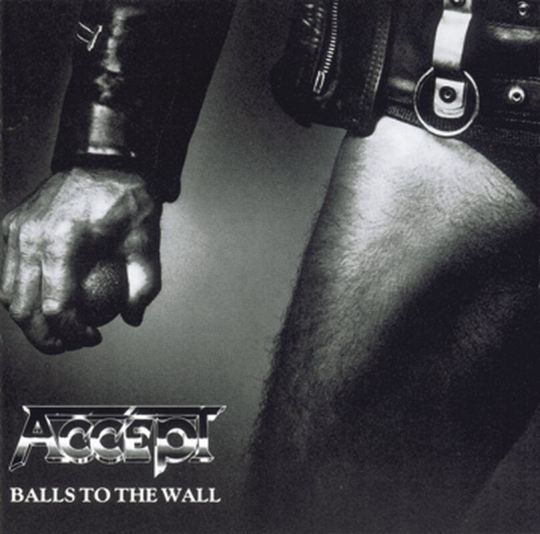
Accept - Balls To The Wall
This album is gay af. It was noted at the time and the band acknowledged it. To quote drummer Stefan Kaufmann "It's a phenomenon that should be taken into consideration. Because it exists on a wide scale and should be demystified. In fact, this is a phenomenon of society that needs to be taken as such. For a long time gay people have been considered as sick or insane. And yet, it's time to respect these people, open our minds which are often closed."
This is the kind of music that I think most people are thinking of when they say "heavy metal". It is riff driven heavy music with corny lyrics about tough guy stuff. Like having sex with men. Accept is like if AC/DC was self aware. And thankfully the only ballad in the album is actually good too. It's hard to review this style of metal without sounding dismissive. The camp is obviously deliberate here so I don't feel as bad poking a little fun because I think I'm laughing with them a bit. But really this is a simple and effective album with no weak tracks and themes that it plays straight. Which doesn't seem like much but in the world of late 70s early 80s heavy metal its really raising the bar for future acts.
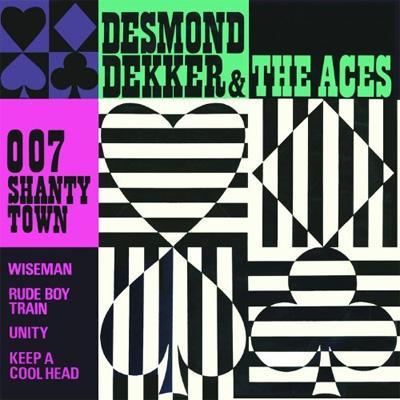
Desmond Dekker & The Aces - 007 Shanty Town
Before ska was associated with middle school boys with frosted tips and cargo pants, before the days of London teens in ill fitting suits and checkerboard patterns, before dub and reggae there was Desmond Dekker. One of the 60s original ska artists. With a sound that blended Jamaican mento music with a solid helping of jazz and R&B to create a unique blend of Jamaican pop music.
The unique beat that we all know and love (you love it right?!) is created by muted guitar downstrokes on the one and three beats and loud staccato upstrokes on the two and four. Add in some horns, walking bass, and vocal harmonies and you've got the blueprint for basically all ska. And this combination, the crisp staccato guitar and horns especially, grant a uniquely sunny disposition to basically the entire genre so that even when Desmond Dekker is singing about poverty or crime there is an underlying love for his home in every song. Plus a lot of the gangster aesthetic is pure kitsch and is strangely one of the major aspects of the genre to have maintained throughout the years. Ska artists all wanna be in Oceans Eleven even in back in 1967.
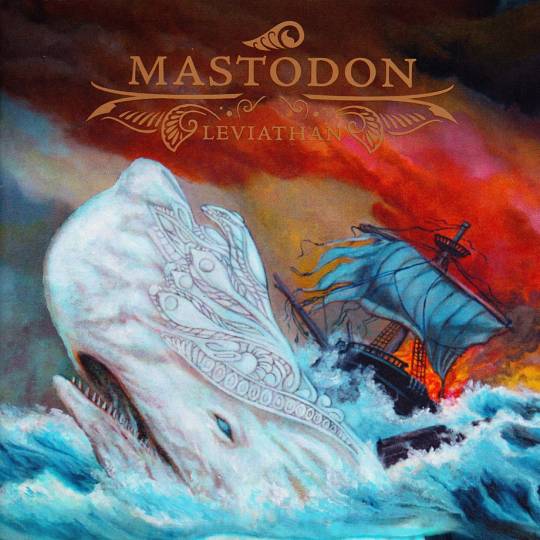
Mastodon - Leviathan
If 17 year old me knew that in the year 2023 I was still going off about how much I love this album I think she would call me a slur and have a weird feeling about being called 'she'. I've liked this album for a while and the more metal I listen to the more I appreciate Mastodon. They are somewhere between being sludge, progressive, and death metal and they navigate that in-between with skill. The chugging skudginess can easily erupt into speedy solos and there is an abundance of complexities in the musical arrangements.
Leviathan is the second in a tetralogy that incorporated their first four albums each being themed after a classical element. Leviathan is a concept album about Moby Dick and therefore is obviously water. If their more aggressive debut is fire and the sludgier Blood Mountain is earth then Leviathan's status as water follows. The riffing crashes like waves and there are a lot more melodic flowing sequences that also suggest water. Although the album is more strictly focused on its Moby Dick themeing. Leviathan crashes forward with an intensity that is honestly too much to just call sludge metal but it never hits the level of screaming that you expect from death metal. In retrospect Mastodon have always been a very progressive metal act and I think this album in particular does the best at blending all of their different styles into one package. That said all four of their original albums, Remission, Leviathan, Blood Mountain, and Crack The Skye are worth a listen.
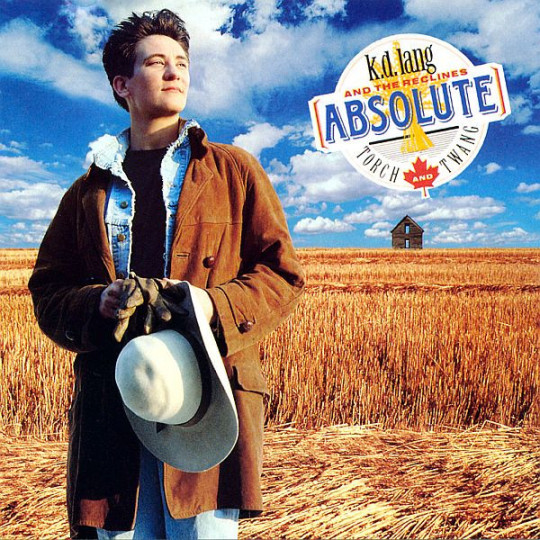
K.d. Lang And The Reclines - Absolute Torch And Twang
Oh so my son of a bitch brother is gonna be a bigger lesbian than I am by giving me a k.d. Lang album I've never listened to huh? Before she transitioned to a more lounge / jazz style k.d. Lang was a full on country western musician with her band The Reclines. Country music had been in severe decline for over a decade but somehow Lang avoids any of the pitfalls of her contemporaries. Instead she mines decades worth of country music blending rock influenced outlaw styles, singing cowboy western styles, and 60s Nashville sound into a monolithic style that celebrates the history of the genre without just being a period piece. And her voice is just astounding. She can sing tender love ballads and rollicking honky tonk numbers with equal ferocity. Her mezzo-soprano is maybe the richest I've ever heard.

Luie Luie - Touchy
Luie Luie is here to tell you about a new dance called the Touchy. This is going to be a bitch to explain. Luie Luie was an outsider musician from the 70s and understanding that he was almost certainly on the autism spectrum goes a long way towards understanding what's going on here. You see Luie Luie was a nightclub manager who thought that people didn't touch enough while dancing anymore so he tried to make a new dance called The Touchy that would encourage touching but with clear rules for how you were allowed to touch you dance partner. It's strange but all very well meaning. He managed to finance the creation of an album and so Touchy was born.
So after Luie Luie tells you that he's invented a new dance and that he plays all the instruments on the album and that every touchy starts with a "wild horn intro" we get a wild horn intro and holy shit he's actually a really good musician. The touchy is basically a mix of mariachi, funk, soul, and lounge music. The slightly offbeat sound and cheap production are wildly endearing especially when you understand this as a passion project that is composed, performed, and recorded all by one man. Luie Luie is a fairly talented multi instrumentalist and where his technical skills falter he covers with incredible ear for complex arrangement. Some songs like El Touchy make for fairly danceable music, although I would rather sit and listen than dance and touch if I'm being honest. Although special mention should be given to the track Touch Of Light for it's intense layering of up to fourteen trumpet parts creating an elaborate tone poem that recalls the works of Ligeti. I'm eternally baffled and grateful for the Touchy it is the rare piece of outsider music that is actually as listenable as it is intriguing.

Kumi Tanioka - Final Fantasy Crystal Chronicles OST
Crystal Chronicles is such a weird mess of a game. It has an intriguing narrative structure, but the repetitive gameplay loop makes finding the plot tedious. Plus it isn't really fun to play at all unless you have at least three people with game boy advances and gba link cables. I beat it single player when I was a kid because I'm neurodivergent.
Soundtracks are difficult to review. Should you review it as a stand alone album, pretend the source material doesn't exist? You would be missing crucial context and anyway a soundtrack that does stand alone as an album probably didn't work that well as a soundtrack then. Well the answer for me is to realize everything has context. Nothing exists in a void. If you saw an album with blood and gore on the cover and the title in a death metal font and then the album contained folk rock your opinion of the music would be colored by that experience even though the cover has no effect on theusic. So let your understanding of this music be colored by the fact that it is the soundtrack to a GameCube game.
Kumi Tanioka is mainly just the Crystal Chronicles composer and that's a shame because she is extremely good. Final Fantasy games have a long history of using their music to heavily influence the game's mood, but that is partially because of the efforts of long time composer Nobuo Uematsu. Tanioka manages to outdo even Uematsu when it comes to heavily themeing the soundtrack. The Crystal Chronicles OST features music heavily influenced by a mix of medieval folk styles. Music that plays in towns and in roads will have aspects of Byzantine music while your hometown festival is very Celtic. Some tracks like Twilight In Dreamland show some influence from South American music too. The idea of a world music soundtrack to a game about trying to travel ever farther into an unfamiliar world is quite brilliant.
The music is also melodically beautiful. And catchy. There are tracks that you are severe risk of getting stuck in your head especially Annual Festival or the opening vocal track Sound Of Wind. A lot of games have a vocal pop track tacked somewhere in there and sometimes it does work (I dunno how FFXV pulled off a Florence Welch cover of Stand By Me but goddamn it worked) but usually it's just an out of genre pop song that doesn't mesh with the game at all. Sound Of The Wind is a great song that works as a pop song units own right but also sticks to the medieval themeing of the rest of the soundtrack.
You might not appreciate listening to this as much if you haven't played the game. And honestly I can't in good faith recommend Final Fantasy Crystal Chronicles, it's not a very good game. But this soundtrack is one of the ones I put on just to listen to and it is probably my second favorite Final Fantasy OST after FFIX.
#the aquabats#Deee-Lite#shonen knife#bitch ass darius#accept#desmond dekker & the aces#mastodon#k.d. lang and the reclines#luie luie#kumi tanioka#500 album gaiden
8 notes
·
View notes
Text
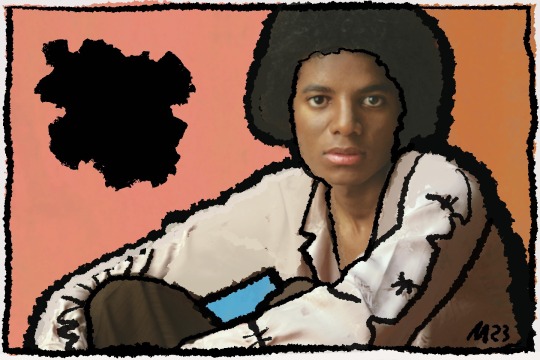
The New Wave
“Rock with You” (1979)
Michael Jackson
Epic Records
(Written by Rod Temperton)
Highest U.S. Billboard Chart Position – No.1
Before I begin this entry a few disclaimers (in the style of the wonderful Andrew Hickey, creator of the absurdly great podcast The History of Rock and Roll in 500 Songs, which I wholeheartedly recommend), there has been so much press, and bad press, about Michael Jackson since his death that it should be acknowledged. Much of the bad news is the accusation that he was a constant, and serial, sexual abuser of young boys. The jury will forever be out on these accusations based solely on his influence and power, which have grown steadily since his death in in 2009. His estate is vastly wealthy, and continues to grow. It does not surprise me that he was disturbed considering the amount of child abuse he suffered, or that the truth was heavily twisted by him (just watching him in old footage deny his physical alterations, plain for the eyes to see, is evidence enough that he was severely distorted in his relationship to truthfulness). However, I cannot deny how powerful and productive his artistry was and is, and his influence is undeniable. His role as a conduit for other artists alone is wildly impressive. He was one of the greatest innovators in many ways. I believe he was in a lot of pain, and perhaps he caused a lot of pain by displacing that. But his musical influence, which is the reason for this entry, is my absolute focus.
I understand that this set of posts have been under the title of The New Wave, which would lead one to associate all entries to New wave music, and in way, they do. And yet stylistically, what exactly is New wave? It is technically a catch-all phrase, a term for the many, many styles emerging post Punk. A big factor for my purposes is the era; here, 1979/1980. All of these records represent a shift forward in musical styles and tastes, and if not (or if you disagree), they did that for me. Perhaps they were just the cleverest and most sophisticated pop songs happening. Although this track is certainly disco, that dirtiest of words, “Rock with You” was one of those musical shifts forward.
It opens with a drum fill— a solid rat-a-tat-a-tat that is an absolute hook to the song, and more wonderful in that it doesn’t appear again. Drum fill to flute sounds, what could be better? Then strings, a chorus of heavenly voices, and a beautiful, perfect vocal. Danceable but midtempo, it is maybe one of the most approachable, perfect radio hits ever. When I first heard it, I felt my teenage life change; it must have been what the Beatles were like in the 60s, just like that drug of newness. It was a song that felt like it belonged entirely to its year and era, but was singular. I rocked and rocked and rocked (the dance move that accompanied the hit). I bought my first album ever in Off the Wall, and played the grooves off of it. But perhaps the real secret to the song was its composer: Rod Temperton.
By all accounts the British-born Rod Temperton was the most modest of supreme talents as a songwriter (he is described as quiet and unassuming); not only did he write “Rock with You”, he arranged it in minute detail (including vocal and rhythm arrangements) just as he had as a bandmember for all of the big hits in the disco funk 70s band Heatwave (“Boogie Nights”, the ballad “Always and Forever”, and the exultant “The Groove Line”). He was an expert songwriter and arranger, and his ability to mainstream soul records was not missed by Quincy Jones, who snapped him up to write new songs for Michael’s record (he also wrote the title track “Off the Wall”, and later the title track for “Thriller”).
Of all of the songs in Jackson’s catalogue, none float over the airwaves as effortlessly. Like the drum fill open, Michael’s first line (“Girl, close your eyes, let the rhythm get in to you”) is masterful: sexy and inviting, a soul record. The song itself is forged in disco, 4/4 time. It invites you to the dance. The bridge of the record is a flute solo, with mellow velvet voices as a cushion, an Adult Contemporary record (think Carpenters). So, in this one song, a sweet romance about coming to the dance, you have a perfect fusion of what in many previous eras the parts of which would have segregated to its own chart, own region, own audience. The magic of the single was that it existed at all, because Michael was the perfect performer to truly bridge these gaps. It was overt, it was executed to perfection, and it was designed to top the charts, and it did, for 4 weeks. And it made my teenage heart burst with joy every time it came on the radio.
The list of musicians on any Jackson record is surely going to be a who’s who: among them Quincy Jones as producer, whose long career was uncanny (or well, extremely canny for winnowing talents), Greg Phillinganes on synths (a prolific career), and John Robinson on drums, to name a few. Robinson, the architect of that famous drum open for “Rock with You”, was so revered as a session musician that his Wikipedia page is dizzying. He appears to have been on every pop single ever post-Michael (Steve Winwood’s “Higher Love” notably has his drums on it). He was famous for perfect technique, and a sure steady hand. I had never really ever considered just how much I love the drum opening for “Rock with You” until now, and that without the drums that begin the song, well, I am not sure my heart would have beat quite as fast.
Coming to the end of this post it is apparent how hilariously un New wave “Rock with You” is. It is not post anything, but obversely it was the full flower of 1979, the apotheosis of 70s pop and disco, and possibly a harbinger of the excesses in studio production that the 80s would bring to recordings, not least in Jackson himself trying to top Off the Wall. If that record sold an astounding 20 million copies, Pink Floyd’s The Wall would sell 33 million in the same year. Michael Jackson would have to do something about that.
Rod Temperton passed away in 2016; John Robinson, Greg Phillinganes, and Quincy Jones are still with us.
9 notes
·
View notes
Text
youtube
Knock (노크) 못참겠네 (Moschamgess-ne; I Can't Stand It) (1997)
periodical old kpop power hour of power (POKPHOP) 1집
what better way to start off this series than with my favorite song from this era ever. the obscurant one-and-done group Knock's "못참겠네" (Moschamgess-ne; I Can't Stand It) is a profoundly strange, groovy banger that's like... you ever hear something and then never stop thinking about it for like, two-plus years? yeah, this is that. it's riding a crazy, pointillistic disco-house flow somewhere between Deavid Soul and Akufen, Cassius trading their vinyl for ROMplers, maximalist microhouse: as skeletal as it is stuffed with little details, spangles and accents, filter sweeps and microsamples. it's things like the molecular reduction of "That's the Way (I Like It)" in the intro, the track snapping into a nocturnal, jazzy hustle, the thumping kick and its accompanying squirrely bassline bending itself into a möbius strip, multiple hard-panned samples jumping out of the mix at the same time, or the digi-horns, space drums, pulses, beeps, whirls, pagers and phones all going off in parallel, and god knows what else (there's a lot more!). and the trio dovetail with and riff on all this racket perfectly, ooh-la-la harmonies colliding with angular co-ed rap geometry, sweetened sing-song into a perfect hook as sassy as it is yearning. and the breakdown after the first chorus is pure madness, a couple bars at a jagged clip and then "it's about that time I put you back on track!" in the center channel and "it's disco time, baby!" out of the left before devolving into gang chants and scream-raps. then it gets itself together and locks back on to that hellacious groove. totally devious.
it's a small thing, too, but I greatly appreciate this song knowing how good its hook is and beating the hell out of it as such. so many hits (and not-hits) of the time just sorta end, you know? here they drop the drums a second, bring them back and then hammer the hook into your brain over and over, layering the intro rap and a bunch more of those laser pulses on top. anyway... this song fuckin' rules so hard. what also fuckin' rules? this song's video!
youtube
the MV is so, so, sooooo good. a low-budget urban daydream of 90s street scenes (shout out to Freetel!), passing trains, underpass dance rituals and rain-slicked parking lots, all lit by colorful strobes and fogged-out flood lights, absolutely killer fashion (and at least two killer wigs), crazy fresh dance moves, just a bunch of grooving and messing about with friends on the street corner with a tinge of X-Files and Jet Set Radio, all linked together by an unimpeachable sense of cool. the image of the group just vibing on top of those cars while shrouded in fog and light? simply iconic. the video's mysterious nocturnal energy and heady, kinetic rhythm is the perfect match for the music, and the combination is a revelation.
youtube
the rest of Knock's sole album also rules, even if none of the other songs quite rise to the level of revelation that the title track does. every song is a keeper, whether the off-axis G-funk of "YAMMA" and "Bad Girl", the cartoonish lilt of "오리", or the infectious duo of "Miss Miss" and "너 친구맞니?!", which both utilize the structure of a four-on-the-floor hook juxtaposed with a funky syncopated rhythm for the verses. "연습게임" is mystical and subterranean, and even the requisite album-closing ballad "I feel in your eyes" is a jammer: slow-and-low, spare yet lush, unpretentious and memorable. the whole record's united by the same off-kilter soundworld that animates the title track—the same ROMpler full of samples bouncing every which way, instruments all over the place, bits and pieces of voice and sound accenting everything, almost like a fourth vocalist. it's full of hooks, microhooks and grooves, all anchored to a mad sense of rhythm and space. all these joints have been stuck in my head for ages, basically! it's always it's the weirdest, galaxy-brain tunes that go nowhere and are doomed to obscurity, ain't it.
download in FLAC or V0 (ripped from my CD... scanned, too!)
bonus fun fact #1: the female rapper with the buzz-cut is named Z-E (지이)—after Knock fizzled out, she linked up with a rapper by the name of Turtleman to form the trio Turtles (거북이), who scored hit after hit until Turtleman's tragic passing in 2008. Turtles were a universally beloved trio, and deservedly so—they also absolutely rule.
bonus fun fact #2 and #3: "못참겠네" (plus "YAMMA" and "Bad Girl") was arranged by one Jegal Min (제갈민), one of the unsung heroes (see also: Shin Young-sub (신영섭)) of the original 1992-1994 "rap dance" craze that was dominated by Seo Taiji, Hyun Jin-young, DEUX and others. like many a failed pop star, he then found far more success in production and management. one of his backup dancers, Kim Jung-nam, later found stardom as half of the legendary Turbo (터보).
bonus fun fact #4: future entries in this series will absolutely not go on this long. i just really love this song, yeah?
tumblr exclusive bonus fun fact #5: periodical old kpop power hour of power (POKPHOP) is a series i've started on my cohost page but to a certain extent this tumblr has been on a POKPHOP for seven whole years now
hat tip: Old Kpop추억의뮤비 and 58RNA3QD
33 notes
·
View notes
Text
Sent from my iPhone
20 - 1615 - 1110 - 65 - 1
MUSIC
The 25 Best Rage Against the Machine Songs
From funky, radical bombtracks to incendiary covers, here are the rap-metal masters' finest moments
BY
DAN EPSTEIN, ANDY GREENE, KORY GROW, DANIEL KREPS, HANK SHTEAMER
WHEN RAGE AGAINST the Machine emerged in the early Nineties, there was no other band even remotely like them. They not only fused rock with rap at a time when there was a stark divide between the two genres, but their radical lyrics called for a political revolution during the supposedly peaceful decade after the Cold War and before 9/11. This was a time when most bands were looking inward toward their own pain, not outward to the struggles of minorities in America and people living under oppressive regimes across the globe.
“It was one of those rare instances when the planets just lined up right and the alchemy of musical magic and history just poured out,” Chuck D recalled of Rage in 2016. “I saw them in concert [early on], and what I remember most is how wiped-out the crowd was afterwards. I had never seen a place destroyed; sweat and blood on the walls. The fucking tables were turned over and rafters pulled down. It was crazy. They’re the Led Zeppelin of our time.”
Rage broke up in 2000 and left behind just three albums of original material, but those songs aged remarkably well during the chaos and tumult of the past two decades. And when they announced a reunion tour, which finally kicks off July 7 after several pandemic-related delays, tickets sold out with remarkable speed. There’s no hint that they’ve recorded any new music, but they really have no need to. They somehow created the soundtrack for our time a quarter-century ago. Here, we count down their 25 greatest songs.
25
‘Darkness’ (1994)

MICK HUTSON/REDFERNS/GETTY IMAGES
One of Rage’s earliest and most incisive songs, “Darkness” first showed up on the band’s self-titled 1991 demo tape before it got a major-label makeover — complete with one of Morello’s most chaotic, acrobatic solos — for its inclusion on the soundtrack to 1994 Brandon Lee movie The Crow. Originally titled “Darkness of Greed,” the song, which toggles between mellowed-out jazz funk and steely metallic groove, likened the spread of AIDS in Africa — and the U.S. government’s “procrastination” toward stemming the virus — as genocide. “They say, ‘We’ll kill them off, take their land, and go there for vacation,'” de la Rocha whispers on the track. —D.K.
ADVERTISEMENT
SCROLL TO CONTINUE WITH CONTENT
24
‘How I Could Just Kill a Man’ (2000)
MICK HUTSON/REDFERNS/GETTY IMAGES
On “How I Could Just Kill a Man,” Cypress Hill’s first single and first hit, rappers B-Real and Sen Dog traded verses about “takin’ out some putos” with a Magnum and making young punks pay. Their funky tableaus of terror built to the sort of wanton observation that would make any mother shudder: “Here is something you can’t understand — how I could just kill a man.” When Rage Against the Machine covered the track for Renegades, de la Rocha took all the verses for himself while Morello and bassist Tim Commerford (or “tim.com,” as he billed himself on the record) ratcheted up the noise to deafening levels on the chorus. “The first Cypress Hill record and [Public Enemy’s] It Takes a Nation of Millions to Hold Us Back were two of the biggest hip-hop influences on Rage Against the Machine,” tim.com later told Rolling Stone.Rage might not have killed a man, but they definitely laid a few speakers to rest with their rendition. —K.G.
ADVERTISEMENT
SCROLL TO CONTINUE WITH CONTENT
23
‘Maggie’s Farm’ (2000)
BRIAN RASIC/GETTY IMAGES
Bob Dylan was saying goodbye to the folk world when he wrote “Maggie’s Farm” in 1965, and it’s very tempting to read some of the lyrics as an angry kiss-off to folkies who wanted him to remain stuck in the past. “Well, I try my best to be just like I am,” he sneered. “But everybody wants you to be just like them/They sing while you slave and I just get bored.” When Rage tackled the song for their 2000 covers collection, Renegades, they were also at a crossroads of sorts. Communication lines between members were breaking down, and when de la Rocha sang “I ain’t gonna work at Maggie’s Farm no more,” he might as well have been putting in notice that he was done with the band itself. —A.G.
22
‘War Within a Breath’ (1999)
FRANK MICELOTTA/GETTY IMAGES
“War Within a Breath” closes out Rage’s final LP of original material, 1999’s The Battle of Los Angeles, and it’s somehow fitting that these are the last notes we’ve heard to date of the band’s unmistakable sound. It’s an extremely on-brand tune that touches on everything from the Zapatismo movement to the Palestinian Intifada. Simply put, it sums up the entire Rage ethos in three and a half minutes. “Every official that comes in, cripples us, leaves us maimed,” de la Rocha roars. “Silent and tamed/And with our flesh and bones, he builds his homes/Southern fist, rise through the jungle mist.” —A.G.
21
‘Settle for Nothing’ (1992)
MICHAEL PUTLAND/GETTY IMAGES
Rage’s self-titled debut was more or less a 52-minute onslaught, which is why “Settle for Nothing” — the album’s most understated track and maybe the closest thing the band ever did to a power ballad — stands out so starkly. Over an eerily somber riff with shades of Metallica’s “One,” de la Rocha narrates the inner monologue of a desperate kid who chooses the cold comfort of gang life (“I’ve got a nine, a sign, a set, and now I got a name …”) over the trauma of a broken and abusive home. His voice rises to a livid howl (“Death is on my side … suicide!”) as the band blasts into a sinister Black Flag–meets–Black Sabbath wallop. The delicate filigree of Morello’s clean-toned solo suggests a warped spin on cocktail jazz — a quietly arresting sonic lament for the grim cycle of violence the song portrays. —H.S.
20
‘Microphone Fiend’ (2000)
FRANK MICELOTTA/IMAGEDIRECT/GETTY IMAGES
Rage kicked off their covers album, Renegades, with an ultra-heavy rendition of Eric B. and Rakim’s hip-hop anthem “Microphone Fiend.” Where the original sampled Average White Band’s funky guitar intro to “School Boy Crush,” Morello summons his own devastating wah-wah fury for Rage’s version, while bassist Commerford does most of the heavy lifting in the riff department. De la Rocha edited the lyrics to give the tune more of a rock chorus, and in a rare show of hip-hop humility, he side-stepped the lines Rakim wrote to shout himself out. The makeover translated to a direct rap-rock hit showing how smooth operators really do operate correctly for a heavy E-F-F-E-C-T. —K.G.
19
‘Calm Like a Bomb’ (1999)
FRANK MICELOTTA ARCHIVE/GETTY IMAGES
“Hope lies in the smoldering rubble of empires,” spits de la Rocha on this blistering highlight from The Battle of Los Angeles,perfectly summing up the RATM ethos in a single line before setting his sights on the global plight of the underclass. (“Stroll through the shanties and the cities’ remains/The same bodies buried hungry/But with different last names.”) And speaking of smoldering, “Calm Like a Bomb” finds Morello offering up a veritable master class in the use of the DigiTech Whammy pedal, conjuring impossibly sick and searing waves of undulating noise from his guitar. —D.E.
18
‘The Ghost of Tom Joad’ (2000)
EBET ROBERTS/REDFERNS/GETTY IMAGES
Rage Against the Machine were opening up for U2 on 1997’s PopMart stadium tour when they first played Bruce Springsteen’s “The Ghost of Tom Joad.” The original recording is a somber tale of urban poverty that Springsteen delivers in a hushed, resigned tone, but Rage present it like a lost song from the Evil Empire sessions — complete with a crushing Morello riff that bears little resemblance to the folky source material, yet still fits perfectly. The version worked so well that Rage kept it in their live set until they split three years later, making it the most-played cover song in their live repertoire by a huge margin. It also appeared on their 2000 covers collection, Renegades. And in 2008, Morello guested with Springsteen and the E Street Band to play a more traditional version of the song. Morello even became a temporary E Street–er in 2014, when Steve Van Zandt had to miss a tour to film his show Lillyhammer. The idea of Morello playing in the E Street Band would have seemed pretty far-fetched circa 1997, but time can make strange things happen. —A.G.
17
‘Born of a Broken Man’ (1999)
FRANK MICELOTTA/GETTY IMAGES
One of the most emotional and evocative songs in the RATM catalog, this standout track from The Battle of Los Angeles finds de la Rocha musing on the mental-health struggles endured by his father, the influential Chicano artist Beto de la Rocha. With Morello’s guitar ringing like a mournful church bell, lyrics like “His thoughts like a hundred moths/Trapped in a lampshade/Somewhere within/Their wings banging and burning/On through the endless night” are unforgettably haunting — but so, too, is the younger de la Rocha’s defiant mantra of refusal to suffer the same fate. “Born of a broken man,” he insists, “Never a broken man.” —D.E.
16
‘Wake Up’ (1992)
STEVE EICHNER/GETTY IMAGES
In six funky minutes, Rage Against the Machine unpack decades of institutional racism within the U.S. government on “Wake Up,” a deep cut off their self-titled debut. De la Rocha lambastes former FBI director J. Edgar Hoover and his policies, condemning the way the government targeted Dr. Martin Luther King Jr. for protesting Vietnam and claiming it murdered Malcolm X “and tried to blame it on Islam.” “He turned the power to the have-nots,” the singer says, “and then came the shot.” The track ends with de la Rocha screaming “Wake up!” eight times in a row (a climax that, taken out of context, fits perfectly in the final scene of The Matrix) and a quote from King: “How long? Not long, ’cause what you reap is what you sow.” —K.G.
15
‘Year of tha Boomerang’ (1996)
GIE KNAEPS/GETTY IMAGES
“Year of tha Boomerang” marked the first preview of the band’s much-anticipated sophomore album, having been featured — as “Year of the Boomerang” — on the soundtrack for John Singleton’s 1994 film, Higher Learning, more than 18 months before Evil Empire’s release. Inspired by a quote from French anti-imperialist Frantz Fanon, the song offered a crash course on the “doctrines of the right” that de la Rocha would further rage against on Evil Empire: imperialism, the oppression of both minorities’ and women’s rights, and genocide, all punctuated by Morello’s screeching riot-siren riff. —D.K.
14
‘Sleep Now in the Fire’ (1999)
RAGE AGAINST THE MACHINE/YOUTUBE
One of Professor de la Rocha’s greatest social-studies dissertations, “Sleep Now in the Fire” traces how American avarice has decimated Third World countries, as well as marginalized people at home. “The party blessed me with its future,” he sings, playing the role of a Washington bigwig, “and I protect it with fire.” When the chorus comes with its elastic Morello riff, de la Rocha sarcastically encourages the oppressed peoples he’s singing about to “sleep now in the fire.” Later, he ominously catalogs the legacy of imperialism, slavery, and deadly force underlying the American myth, vowing, “I am the Niña, the Pinta, the Santa Maria/The noose and the rapist, the fields’ overseer/The agents of orange, the priests of Hiroshima.” In 2000, the band shot the song’s video on the steps of the New York Stock Exchange (without permission) and in one portentous moment, the camera captured someone in the crowd holding a “Donald J. Trump for President 2000” sign. In 2020, Morello joked, “I would say that we are karmically entirely responsible [for Trump running for president], and my apologies.” —K.G.
13
‘Maria’ (1999)
TIM MOSENFELDER/GETTY IMAGES
Marrying one of Morello’s weightiest riffs to one of de la Rocha’s most vividly devastating portraits of injustice, this Battle of Los Angeles deep cut demonstrates how the band just kept sharpening its attack all the way through its original lifespan. De la Rocha tells the story of Maria, a Mexican woman smuggled into the U.S. as “human contraband” and put to work in a sweatshop, where she finds herself at the mercy of an abusive foreman. Eventually she chooses a grisly suicide on the job over being treated “like cattle.” The song frames Maria as a kind of martyr figure, her story a constant reminder of North America’s long cycle of oppression and exploitation: “And through history’s rivers of blood she regenerates/And like the sun disappears only to reappear, Maria, she’s eternally here.” The song makes masterful use of dynamics, dipping down to a hush as de la Rocha recites the prior lines, and then explodes into a full-force stomp, with Morello’s swaggering, irrepressible guitar line symbolizing Maria’s phoenix-like rebirth. —H.S.
12
‘Vietnow’ (1996)
NIELS VAN IPEREN/GETTY IMAGES
Before Fox News brainwashed a generation of TV viewers who Alex Jones then pushed down the Q tunnel, Rage Against the Machine took aim at the insidious presence of right-wing talk radio on the Evil Empire cut “Vietnow.” With microphone fixed on Rush Limbaugh and the duplicitous Christian right, de la Rocha throws lyrical barbs like “Let’s capture this AM mayhem, undressed and blessed by the Lord,” “Terror’s the product you push,” “The sheep tremble and here come the votes,” and, on the chorus, “Fear is your only god on the radio/Nah, fuck it, turn it off.” The final single from Evil Empire, “Vietnow” served as an AM/FM foil of sorts to The Battle of Los Angeles’ first single “Guerrilla Radio” three years later, a track that demanded the listener “Turn that shit up.” —D.K.
11
‘Bullet in the Head’ (1992)
LINDSAY BRICE/GETTY IMAGE
Rage wrote “Bullet in the Head” just as America was declaring victory in the Gulf War, a conflict that Americans watched in real time on CNN and supported in overwhelming numbers. To de la Rocha, the made-for-TV war was a sham designed to benefit the military-industrial complex, and anyone who bought into it was a zombie brainwashed by the media. To put it another way, their brains had been hit with propaganda bullets. “They say jump and ya say how high,” he screams on the song. “Ya gotta fuckin’ bullet in ya head.” When introducing the song at an early concert, he made his point even clearer. “This song is about being an individual, about searching and finding new information,” he said, “and using your strength as an individual to attack systems like America who continue to rob and rape and murder people in the name of freedom.” —A.G.
10
‘Down Rodeo’ (1996)
GIE KNAEPS/GETTY IMAGES
This Evil Empire highlight uses Rodeo Drive, Beverly Hills’ glitziest shopping district, as a launching pad for de la Rocha’s bitter musings on consumerism, wealth disparity, and socioeconomic segregation: “So now I’m rollin’ down Rodeo with a shotgun,” he raps, before delivering an even harsher follow-up: “These people ain’t seen a brown-skin man since their grandparents bought one.” Filled with bracing couplets like “Can’t waste a day/When the night brings a hearse/So make a move and plead the Fifth/‘Cause you can’t plead the First,” and harnessed to a powerful, swaggering groove, “Down Rodeo” also features some synth-like glitch bursts from Morello’s multi-pronged guitar, which prods the music until it finally gives way to de la Rocha’s anguished whisper. “Just a quiet peaceful dance for the things we’ll never have,” he laments as the track fades out. —D.E.
9
‘Freedom’ (1992)
LINDSAY BRICE/GETTY IMAGES
With one of the best guitar riffs this side of Black Sabbath’s Tony Iommi, “Freedom” calls for the release of Leonard Peltier, a Native American activist serving two life sentences for the deaths of two FBI agents in 1975. Peltier has always maintained his innocence. “Freedom, yeah!” de la Rocha screams at the end of the song before sarcastically revising the lyric to, “Freedom, yeah right!” In the song’s video, during the breakdown, the group displayed the words “We demand and support the request that Leonard Peltier … be released. Justice has not been done.” “To me, the reaction to the music and things like the ‘Freedom’ video are very encouraging,” de la Rocha said in 1996. “I know that some people look at us as just rabble-rousing or ranting or whining. But I think a lot of that reflects the cynicism that people have when it comes to dealing with political problems.… What we are trying to show is that people can make a difference … that we aren’t all powerless.” —K.G.
8
‘Testify’ (1999)
RAGE AGAINST THE MACHINE/YOUTUBE
“Testify” was the opening salvo from Rage’s third LP, The Battle of Los Angeles, which Rolling Stone deemed as the Best Album of 1999. Originally titled “Hendrix” when the song debuted live due to its usage of a “Purple Haze” chord — “I recently found out that Jimi Hendrix used to play a song called ‘Testify’ when he was a backing musician for the Isley Brothers. It all comes full circle,” Morello later quipped to Guitar World — “Testify” later transformed into an outlet criticizing the impending 2000 presidential election, a showdown where both candidates — George W. Bush and Al Gore — seemed to spout the same capitalist ideology. The song’s music video, directed by documentarian Michael Moore, reflected this pre-election anxiety; eerily prescient, the clip also concludes with a quote by Ralph Nader, who later played an unfortunately crucial role in the 2000 election, as the presence of the Green Party candidate is often blamed for throwing the presidency to Bush. —D.K.
7
‘Take the Power Back’ (1992)
LINDSAY BRICE/GETTY IMAGES
This funky blast from Rage Against the Machine went Public Enemy (and the Isley Brothers) one better, not only encouraging us to fight the powers that be, but reminding us that the power was actually ours in the first place. Three decades before the 1619 Project, de la Rocha decried the Eurocentric teachings of U.S. schools — “One-sided stories for years and years and years/I’m inferior?/Who’s inferior?/Yeah, we need to check the interior/Of the system that cares about only one culture” — over the fiery interplay of Brad Wilk’s slamming drums, Tim Commerford’s slinky, slap-driven bass lines, and Tom Morello’s stabbing chords. —D.E.
6
‘Bombtrack’ (1992)
RAGE AGAINST THE MACHINE/YOUTUBE
Rage Against the Machine wasted no time getting down to serious business on their self-titled 1992 debut, opening the proceedings with this confrontational track. Though the official video for “Bombtrack” would salute the guerilla group Sendero Luminoso (or “Shining Path”) for its 13-year fight against Peru’s oppressive U.S.-backed government, the hard-grooving song itself lays out the band’s stance in broader terms, pledging solidarity with all indigenous peoples who have been abused, exploited, and slaughtered on the altar of imperialism. “Enough/I call the bluff/Fuck Manifest Destiny,” Zack de la Rocha cries. “Landlords and power whores/On my people/They took turns/Dispute the suits/I ignite and then watch ‘em burn.” —D.E.
5
‘People of the Sun’ (1996)
NIELS VAN IPEREN/GETTY IMAGES
Inspired by the 1994 Zapatista uprising in Chiapas, “People of the Sun” prophesies a new day for the descendants of the Aztecs, invoking the civilization’s final emperor — “The fifth sun sets/Get back/Reclaim/The spirit of Cuauhtémoc/Alive and untamed” — while serving up angry reminders of both Spain’s 16th-century conquest of Mexico and the racism-driven Zoot Suit Riots of 1940s Los Angeles. Clocking in at only two minutes and 30 seconds, “People of the Sun” is the shortest song in the entire RATM catalog, but its compact burst of furious intensity makes it the perfect opener for 1996’s Evil Empire. —D.E.
4
‘Guerilla Radio’ (1999)
TIM MOSENFELDER/GETTY IMAGES
When guerrilla wars waged throughout the Latin American world in the Eighties, many of the combatants used underground radio stations like Radio Venceremos in El Salvador to communicate and show solidarity with each other. The leadoff single to Rage’s 1999 LP, The Battle of Los Angeles, draws a direct comparison between those guerrilla radio stations and the band’s own efforts to build a fan base when Top 40 radio and other mainstream outlets never went near their work. The song came out just as the 2000 election was beginning to heat up, and it castigates both of the major candidates. “More for Gore or the son of a drug lord,” de la Rocha raps. “None of the above/Fuck it, cut the cord.” The song concludes with a furious call for a revolution. “It has to start somewhere, it has to start sometime/What better place than here, what better time than now?” Had Rage stuck around through the post-9/11 era, things could have gotten really interesting. Sadly, Rage’s guerrilla radio network was silenced not long after this song hit. —A.G.
3
‘Know Your Enemy’ (1992)
MARK BAKER/SONY MUSIC ARCHIVE/GETTY IMAGES
“Know Your Enemy” remains one of the most fiery moments in the whole Rage catalog: a quintessential pairing of a killer, upbeat Morello funk-metal riff with a furious de la Rocha anti-authoritarian manifesto, marked by lines like, “Cause I’ll rip the mic, rip the stage, rip the system/I was born to rage against ‘em.” (In case the object of his ire wasn’t clear, he later adds, “What? The land of the free? Whoever told you that is your enemy.”) Musically it’s one of the most diverse tracks in the band’s early canon, sporting an almost festive-sounding slap-bass-driven intro and a moody bridge featuring a memorable guest shriek from Tool frontman (and old Morello pal) Maynard James Keenan and percussion from Jane’s Addiction drummer Stephen Perkins. But the song’s brilliant climax comes around four minutes in, when Commerford’s bass grinds out the verse riff, Morello’s guitar comes in blaring out in an uncanny approximation of an emergency siren, and de la Rocha grunts “Come on!” as the band comes slamming back in — the perfect soundtrack to any act of, to quote one memorable line, “D, the E, the F, the I, the A, the N, the C, the E” you could possibly conceive. —H.S.
2
‘Killing in the Name’ (1992)
GIE KNAEPS/GETTY IMAGES
In 1991, four white LAPD officers severely beat Rodney King, a Black man, while arresting him; when a jury acquitted those officers of using excessive force, Los Angeles exploded in riots. Zack de la Rocha channeled his outrage into the lyrics for “Killing in the Name,” a funky update of N.W.A’s “Fuck tha Police.” “Some of those that work forces/Are the same that burn crosses,” he chants repeatedly, condemning police racism and a cycle of above-the-law violence. He drills down on these themes as the song escalates, shouting “Those who died are justified for wearing the badge/They’re the chosen whites.” The song builds and builds until de la Rocha hollers, “Fuck you, I won’t do what you tell me,” 16 times in a row, topping one of history’s most incendiary protest songs. “After our second show ever, we had record-company interest in the band,” guitarist Tom Morello later recalled. “So these executives were coming down to our grimy studio in the San Fernando Valley.… I remember one of the executives squeaking after [‘Killing in the Name’] was done, ‘So is that the direction you’re heading in?'” —K.G.
1
‘Bulls on Parade’ (1996)
GIE KNAEPS/GETTY IMAGES
Rage Against the Machine called their second LP Evil Empire, and many of the songs focused on American foreign policy. On “Bulls on Parade,” de la Rocha, accompanied by an ingeniously minimal Morello riff, aims his fire at the hypocrisy of D.C. policymakers. “Weapons not food, not homes, not shoes,” he roars. “Not need, just feed the war cannibal animal.” He also calls out politicians who pretend to be pro-family, but actually have a “pocket full of shells.” Near the end, Morello blasts off a career-defining guitar solo in which he replicates the sound of a record scratching. Taken as a whole, the track is perhaps the finest distillation of the the sonic Molotov cocktail that is Rage. Fittingly, one of the all-time great “Bulls” performances took place outside the Democratic National Convention in 2000, months before the group originally broke up. “Brothers and sisters, our electoral freedoms in this country are over so long as it’s controlled by corporations,” de la Rocha said before starting “Bulls on Parade.” “Brothers and sisters, we are not going to allow these streets to be taken over by Democrats or Republicans.” —A.G.
IN THIS ARTICLE:
Rage Against the Machine,
Tom Morello,
Zack de la Rocha
MUSIC
MUSIC LISTS
By Taboola
SPONSORED STORIES
23 Insanely Cool Gifts That Are Going To Sell Out Before ChristmasTRENDINGGIFTS
Top Doctor: If You Eat Oatmeal Every Day, This Is What HappensGUNDRY MD
15 Ridiculously Cool Gifts You'll Want To Buy ImmediatelyCOOL GADGETS
Here Are 23 of the Coolest Gifts for This 2022COOLGIFTSLearn More
40 Historic Figures Who Were Actually PhotographedPAST FACTORY
Rapid COVID Antigen Test Kits (Get Yours In Bulk)RAPID COVID TESTS | SEARCH ADS
MORE NEWS
Most of Apple Music's Top 10 Songs of 2022 Weren't Even Released This Year
YESTERYEAR
BY TOMÁS MIER
El Alfa Is Celebrating Sagittarius Season By Showing the World He's Dembow's Fiercest Leader
DOMINICAN STARS
BY JULYSSA LOPEZ
After Taylor Swift Ticket Chaos, Senators Question FTC Over Bot Law Enforcement
BOT BATTLE
BY JON BLISTEIN
A Visit to the Brooklyn Museum With Smino
LUV 4 RENT
BY DEWAYNE GAGE
Kendrick Lamar, Rosalía, and Depeche Mode Top Stacked 2023 Primavera Sound Lineup
PRIMAVERA 2023
BY JON BLISTEIN
READ MORE
THE LATEST
Most of Apple Music's Top 10 Songs of 2022 Weren't Even Released This Year
YESTERYEAR
2:26 PM
‘Phantom of the Opera,’ Broadway's Longest-Running Musical, Extends Final 2023 Run
FINAL CURTAIN
2:08 PM
El Alfa Is Celebrating Sagittarius Season By Showing the World He's Dembow's Fiercest Leader
DOMINICAN STARS
2:03 PM
Adam Sandler Let His Daughters Write His Gotham Awards Speech — And They Absolutely Roasted Him
CLASSIC SANDMAN
12:16 PM
THE DIGITAL DAILY NEWSLETTER
A Cultural Force That
Transcends GenerationsEnter your EmailSUBSCRIBE
BY SUBSCRIBING, I AGREE TO THE
TERMS OF USE AND PRIVACY POLICY.
Go to PMC.com
MOST POPULAR
Box Office: ‘Black Panther 2‘ Rules as Disney’s ‘Strange World’ Stumbles With $4.2 Million Opening Day
King Charles Is Ensuring the Line of Succession With Princess Charlotte’s New Title That Subtly Honors Queen Elizabeth II
Helena Bonham Carter Rails Against Cancel Culture, Defends J.K. Rowling and "Vindicated" Johnny Depp
Crypto's Katie Haun Buys $41 Million Silicon Valley Estate
YOU MIGHT ALSO LIKE
Samuel L. Jackson Challenges Quentin Tarantino Over Marvel Actors Being Movie Stars: Chadwick Boseman Is a Movie Star4 HOURS AGO
Saks Fifth Avenue’s Extended Cyber Monday Sale Has 15% Off Deals on Luxury Beauty Gift Sets5 HOURS AGO
Crypto’s Katie Haun Buys $41 Million Silicon Valley Estate5 DAYS AGO
For Director Ryan White, the NASA Rover Doc ‘Good Night Oppy’ Is the Realization of a Childhood Dream4 HOURS AGO
Billionaire Jeffrey Skoll Buying Into Wizards, Capitals Parent1 HOUR AGO
GET THE MAGAZINE GET THE MAGAZINEGET DIGITAL ACCESS GET DIGITAL ACCESSGIVE A GIFT GIVE A GIFTCUSTOMER SERVICE CUSTOMER SERVICE
ROLLING STONE
LEGAL
Copyright © 2022 Penske Business Media, LLC. All Rights reserved.Powered by WordPress.com VIP
OUR SITES
ad
Sent from my iPhone
22 notes
·
View notes
Text
There's a local bar that hosts open funk jams every Thursday: there's a house band that starts the night, and then after a few songs the band members step down and bring in volunteers from the public. For me, it's been a nice introduction to live performance. The crowd is small, the band is supportive, and I get to practice responding to live musicians instead of recordings.
The last time I went was a little mortifying: I noodled out a suggestion to start a song when the guitarist (another volunteer, a middle-aged guy) said, "What is that, like a ska thing? Just make it funky!" It stung, but he had a point. Outside of "hit on the one," I didn't understand what makes funk funk. But I had already ordered a book of James Brown songs, and when it arrived a few days later I got to work.
I went back tonight after practicing some of that classic funk and had a great time. I got on for three songs, of which the first was easily my best. The saxophonist called a D and I built something really nice out of octaves and 3-4-5 walkups. The drummer was rock solid and I did my best to accentuate his groove. For the second song, the key player wanted an Eb. Although I was playing a borrowed 5-string, I wasn't confident enough to use the low one, so I spent a lot of it in a fairly claustrophobic position on the 1st fret of the D string trying to stay out of the way. The third song came to me, and although I considered trying to cover one of the JB songs I had learned (I Got You [I Feel Good {danananananana}]), I ended up going for a less specific D-to-A thing. By that point the inspiration had dried up and my playing was crusty. It was worth it, though, for the feeling of that first tune.
After my turn, the house bassist came back on while I sat on the couch and talked to some of the players. They nearly got me to go up a second time, but a beautifully androgynous goth bassist showed up with a drummer friend and took the next spot instead. It was cool to hear the vibe change whenever a new musician came on, like watching a time-lapse of a skyline changing as individual buildings rise and fall.
I don't really have a conclusion here. Nine times out of ten, music is made with more than one instrument. If you play bass, it's closer to 9.8. Probably next time I should bring a set of earplugs.
2 notes
·
View notes
Text
"Rage Against the Machine" - A Sonic Revolution that Transcends Time
It's been over three decades since "Rage Against the Machine" unleashed their self-titled debut album upon the world, yet its impact and relevance continue to reverberate through the annals of music history. From the moment the opening riff of "Bombtrack" hits, it's evident that this album is not simply a collection of songs, but a sonic revolution that transcends time.
At its core, "Rage Against the Machine" is a testament to the band's unmatched ability to seamlessly fuse rap, metal, and funk into a cohesive and explosive sound. The blistering guitar work of Tom Morello, with his signature effects and innovative playing techniques, creates a sonic landscape that is both aggressive and melodic. The rhythm section, comprised of Tim Commerford's thunderous bass lines and Brad Wilk's powerful drumming, provides the foundation for the band's groove-laden sound.
Lyrically, the album serves as a scathing critique of social and political injustices. Zack de la Rocha's incendiary vocals deliver powerful messages of resistance, urging listeners to question authority and fight against systemic oppression. Tracks like "Killing in the Name" and "Wake Up" serve as anthems for the marginalized and disenchanted, rallying cries for change and justice.
What sets "Rage Against the Machine" apart is not only its musical prowess, but also its unwavering commitment to activism and social change. The band's ethos of using their platform to shed light on issues of inequality and injustice is as relevant today as it was upon the album's release. From the corporate greed criticized in "Bullet in the Head" to the call for self-empowerment in "Know Your Enemy," the album's themes continue to resonate with a new generation of listeners.
As we revisit this iconic album, I invite you, dear readers, to share your memories and experiences. What does "Rage Against the Machine" mean to you? Did its music and message ignite a fire within you? Let us come together and celebrate the enduring power of this album, as we continue to fight for a more just and equitable world.
youtube
#rage against the machine#tom morello#zach de la rocha#social injustice#rebellion#killing in the name#activism#systemic oppression#music review#90s music#Youtube
10 notes
·
View notes
Text
215: Adam F // Colours

Colours
Adam F
1997, Positiva
I’ve never delved too deeply into ‘90s breakbeat music and its myriad roots and branches (drum and bass, jungle, 2-step, etc.), but by chance I’ve got two of the more adventurous LPs from that family in my collection: 4hero’s Two Pages (literal dollar bin find) and Adam F’s Colours (thrifted from a dude who sells treasures he finds in Montreal’s trash). The diversity within drum and bass seems to me an instructive demonstration of the nearly endless modularity of musical genres. Just as metal and hardcore are delimited by a set of strict aesthetic qualifiers (volume, abrasiveness, a propensity for certain scales), DnB’s foundation of skittering breakbeats and body blow bass/sub-bass would seem to narrow the scope of what you can do with it. Yet despite these respective genres’ “extremity” in relation to what came before them, almost from their inception artists have found ways to expand their expressive capacity through inventive fusions and grafts. (A round of applause here for polka metallers Finntroll.)
youtube
In the case of Colours, which arrives in wax form as a magisterial double LP with bonus 12”, Adam F connects DNB back to the funk and jazz genres where those breakbeats originated, as well as tones I can only call ambient/New Age. You can zone out only so far with those persistent ADHD dot-dash snare hits thwacking along, but the two elements balance nicely. Without Adam F’s relentless drum programming, a lot of this would be pleasant-enough trancey smooth jazz—with it, tracks like “Circles” and “F-Jam” agitate the brain into a more ecstatic state. Over its nearly 70-minute run-time, Colours makes room for retro funk grooves (“Dirty Harry”), cybergoth-night music (“Metropolis”), and dial-up internet future R&B (“Music in My Mind”). It’s great to have such a broad palette represented, given that this was Adam F’s sole long-player before wandering off into an ill-starred attempt to establish himself as a mainstream hip-hop producer, a move that pretty much tanked his career in electronic circles. Never hurts to peak early, especially if option B is not peaking at all.
215/365
#adam f#drum n bass#drum and bass#dnb#nu jazz#jazzstep#techstep#jungle#'90s music#electronic music#edm#music review#vinyl record
2 notes
·
View notes
Text
The Howling Eye: Your Psychedelic Summer Soundtrack
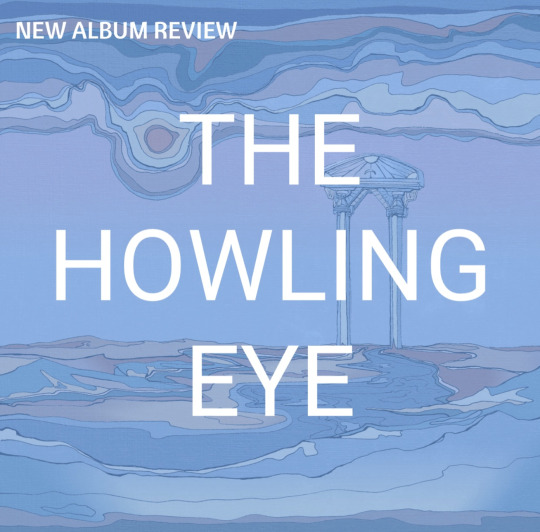
There’s nothing like summer in the city. Heat rises in waves off the asphalt. Palm fronds strike poses against an endless blue backdrop. Everyone seems to pulse to the same languid groove. Heat and light melt everything down into a rainbow soup, and by the end of June psychedelic tunes feel like the only viable soundtrack to daily life. It comes as no surprise, then, that my pick for the most interesting underground album of the month comes from Polish psych outfit The Howling Eye. Their latest offering, List Do Borykan is a 7-track vacation from reality. You never know what’s going to happen next. Did things just shift from space rock to jazz, or from punk to funk? If you’re open to adventure, join me on this psychotropic journey around the corner and up to the stars.
List Do Borykan by The Howling Eye
Space Dwellers, Episode 1 features a slinky, spaced-out groove with percussion straight out of your local jazz lounge. The evolving melody reacts to the forces of gravity as you drift between planets. The vocals—delivered like spoken-word poetry—recount a tale of a stranded crew meeting bizarre musical aliens. The wandering melody is a colorful oil slick floating atop a vat of liquid sour candy.
If you thought the whole album was going to have you gliding around in a cosmic dreamland, then the second track may come as a bit of a surprise. Medieval is bristling folk rock with a punk edge—the type of thing that would be right at home on a Gogol Bordello album. The Howling Eye describes the song as “a bard’s tale of seeing through social hierarchies, defying the laws of tradition and seeking your own path in life.” The band uses a mix of languages to make their point, and bangs it out for an explosive finish.
Brothers starts out as a mellow dreamscape and develops into an intense jam. Different instruments take turns punching out shapes in the fuzz. A guitar soars and dives in the thick midsummer haze. Take time to bathe in the amniotic camaraderie, my friends, and don’t forget to pass that joint to the left.
Space Dwellers, Episode 2 arrives wide awake, and brings the funk to the party! Don’t get too comfortable, though, because The Howling Eye is anything but predictable. This chameleon gradually shifts from snappy red to cool violet. The tune spends time suspended in stonerville before slowing down and dropping into doom territory. It’s a fascinating transformation that typifies the band’s adventurous use of texture and mercurial songwriting style.
Caverns is a refreshing cool-mint palette cleanser of an instrumental. This ethereal groove is mellow and easily digestible, leaving you ready for anything.
Surprise! You probably weren’t expecting a funky dance hit, but Space Dwellers, Episode 3 is a minute and a half of pure booty-bouncing good times. Shake those maracas, and don’t take yourself too seriously! These cats sure don’t.
The album closes on Johnny. It’s an artsy, trippy ode to a friend. The track is thick with bass-driven hypnotic riffs and a spirit of brotherhood. Rock on, friends.
Listening to List Do Borykan is like stepping into a stoner movie where four buddies heading to the corner store end up on a wild interstellar adventure. It’s a thrilling escapade centered around mind-bending riffs and deep friendships, with musical twists and turns I never saw coming. If you’re looking for a soundtrack to your psychedelic summer, then this is it.
#the howling eye#list do borykan#gdańsk#poland#psychedelic doom metal#psych metal#doom metal#psychedelic doom#summer#space rock#stoner rock#jazz rock#psychedelic funk#stoner#jazz#funk#hubert cebula lewandowski#miłosz wojciechowski#jan chojnowski#jonathan garcia valero#interstellar smoke records#galactic smokehouse
2 notes
·
View notes
Text
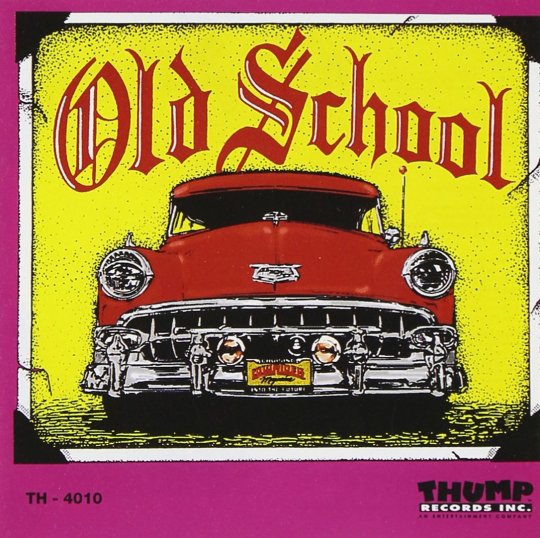

Today's compilation:
Old School
1993
Funk / Hip Hop / Electro
I think what's most striking about this very dope collection of mostly 80s party jams is that, when this album was originally released in 1993, people were *already* referring to this music as being representative of the "old school." I mean, the latest song on this thing is Rob Base & DJ E-Z Rock's 1988 classic, "It Takes Two," and while that's universally regarded as a hands-down old school party-rap standard today, it's wild to think that people were willing to call it "old school" *just five years after* it first came out. Like, imagine considering literally any song from 2018 old school right now?! Crazy, right?
But this fantastic release seems to have already known the deal: three years after the 80s had ended, and still to this day, we were going to refer to a lot of that decade's output as definitively old school. And the brass at Thump Records were clearly proven right by this notion, because, even in these current 2020s, we still refer to this album's overall sound—that electro-synthy-fat keyboard bassline-post-disco-boogie-funk stuff—as 100% old school; not much of the material that preceded it, and no agreed-upon opinion about anything that came after it, either; but one thing that we all seem to know for certain is that the 80s were definitely a part of the old school era.
So, if you're looking for some of those vintage clap-and-stomp old school block party grooves, then this CD is simply essential listening. We've got total classic good-time party-rockers all throughout this thing, like Parliament's "Flashlight," George Clinton's "Atomic Dog," and the Rick James-produced "All Night Long," by the Mary Jane Girls. Also another big hit that topped Billboard's Hot Soul Singles chart in 1981 with Frankie Smith's "Double Dutch Bus," which famously featured a bunch of Ebonic lyrics that would later go on to be sampled by Missy Elliott in her own 2002 rap smash, "Gossip Folks":
youtube
Teena Marie comes through with her #3 R&B hit, "Square Biz" as well, and pioneering Brooklyn rap crew, Whodini, deliver two cuts off of their 1984 platinum-selling LP, Escape, with one of their biggest singles, "Friends"—whose spine-tingling electro keys would find their way into Nas' "If I Ruled the World," and whose chorus would also get interpolated by Everlast during his rootsy folk-blues phase on "Ends"—and its B-side, "Five Minutes of Funk."
And, really, I could've picked pretty much any other random handful of songs from this album and written as glowingly about them as I did the ones above, but I don't wanna overload this post. So just know that just because I didn't end up devoting a few words to most of these songs, that doesn't mean that they don't deserve an equal amount of praise, because they definitely do.
A terrific CD, from top to bottom, that makes for an awesome way to channel 70 minutes of some of those beloved and bygone 80s old school party vibes.
And if you want *3 and a half more hours* of 80s goodness like this, I also have my very own Spotify playlist that's of a slightly different stripe, which includes more dance-pop and freestyle on it, along with classic electro, hip hop, and a little bit of new wave too 😊.
Highlights:
Frankie Smith - "Double Dutch Bus"
D-Train - "You're the One for Me"
Tom Browne - "Funkin for Jamaica"
Parliament - "Flashlight"
Whodini - "Five Minutes of Funk"
George Clinton - "Atomic Dog"
Mary Jane Girls - "All Night Long"
One Way - "Cutie Pie"
Rob Base & DJ E-Z Rock - "It Takes Two"
Teena Marie - "Square Biz"
Whodini - "Friends"
The Gap Band - "You Dropped a Bomb on Me"
Spyder-D - "Smerphies Dance"
#funk#hip hop#rap#old school hip hop#old school rap#electro#dance#dance music#electronic#electronic music#music#70s#70s music#70's#70's music#80s#80s music#80's#80's music
8 notes
·
View notes
Text
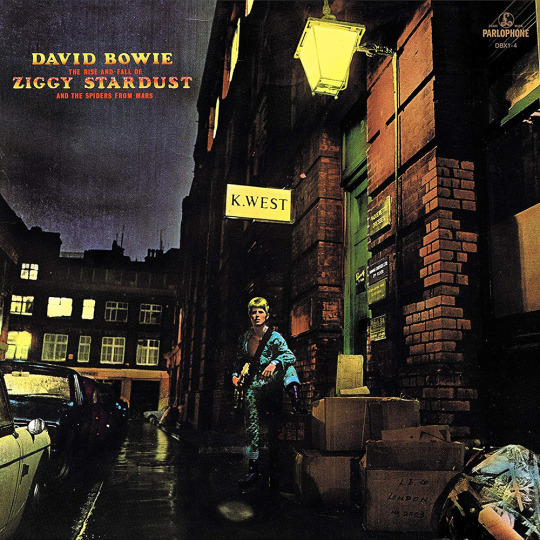
David Bowie - The Rise And Fall Of Ziggy Stardust And The Spiders From Mars
This was the dawning of a new age of glam rock. It's spacey like much of the glam scene, but it brought a rock n roll edge that would go on to be a major influence in the development of punk. Ziggy Stardust is supposedly a concept album about a bisexual alien rock star sent to earth to avert an energy crisis, but let's be real that concept only exists in like four songs on the album and even then only loosely. No this is really just an album about creating a moody and weird rock and roll drama filled with jangly guitars, dissonant chords, and a weird sense of desperation that is hard to put my finger on.
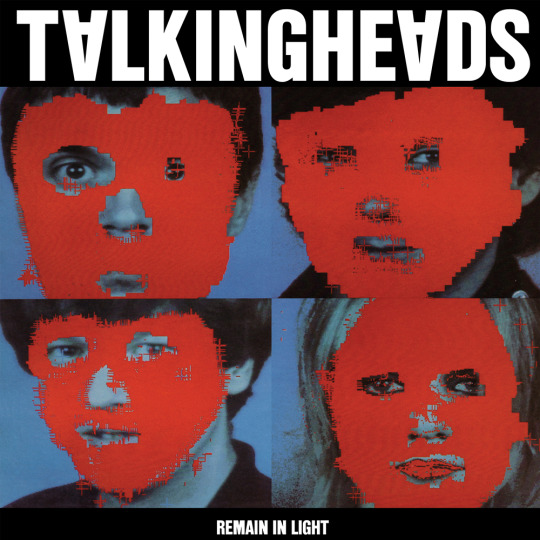
Talking Heads - Remain In Light
Remain In Light is a complex labyrinth of looping polyrhythmic grooves equally inspired by punk and new wave as it was from Fela Kuti. This is the album that truly brings the strengths of every member of the band to the forefront. Chris Frantz's funk/punk hybrid drumming is challenged to incorporate complex rhythmic elements from African drumming. Tina Weymouth's looping bass lines wind up holding the entire album together. Jerry Harrison on keys and guitar wind up filling in all the empty spaces in the soundscape. And singer David Byrne delivers cryptic stream of consciousness lyrics. Remain In Light, like their last couple albums, was produced by Brian Eno, and Eno's touch is definitely felt. The production is tight, but well textured. Odd noises are brought further into the foreground and vocals are allowed to sit further back than most bands would allow. Remain In Light is a must listen album.
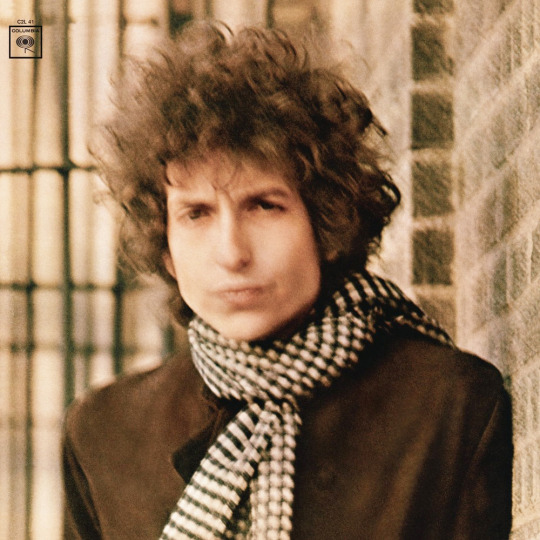
Bob Dylan - Blonde On Blonde
It must be said, Rainy Day Women #12 & 35 is a bad and stupid song. Yes I 'get it' haha see he says stoned like weed but he means like biblically 🤣🤣🤣🤣🤣🤣🤣. Oh it's so fucking clever kill me. The second that song is over this instantly becomes one of the best Dylan albums by a huge margin. The stretch of songs from Visions Of Johanna to Most Likely You'll Go Your Way (And I'll Go Mine) is an amazing run of 10/10 songs. And the closer, Sad Eyed Lady Of The Lowlands is probably my second favorite Dylan closer after Desolation Row. The tightrope act of balancing the folk and rock sides of his style is performed incredibly.
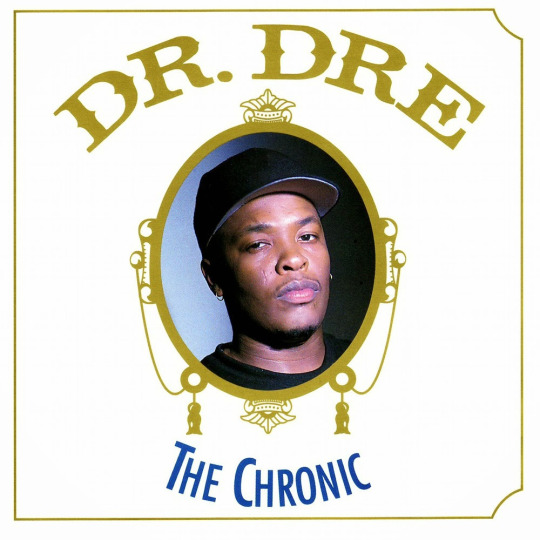
Dr. Dre - The Chronic
The Chrinic is not a Dre solo album, it's a sampler of all the talent he has collected for his new record label. In fact Snoop probably shares as many verses as Dre does on here. It's an incredibly confident move and all the original Death Row inmates are here. Dre, Snoop Dogg, Lady Of Rage, Warren G, RBX, Kurupt, Nate Dogg, it's an incredible cast. And it's all topped off with new and innovative production that utilizes fewer samples, but deploys then with precision. The gratuitous Parliament-Funkadelic sampling would become standard for hip hop going forward, with The Chronic G-Funk was officially established.
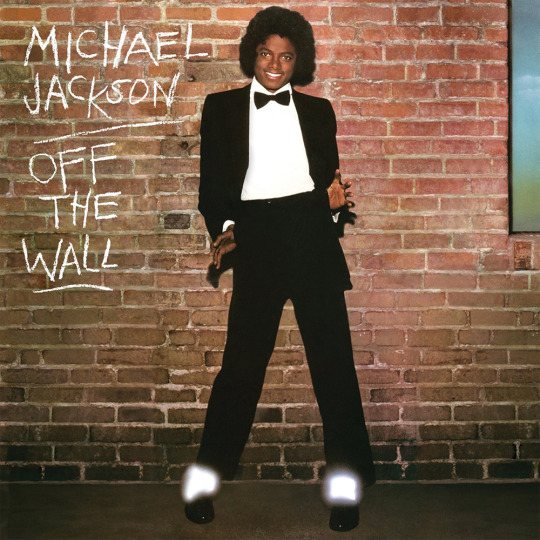
Michael Jackson - Off The Wall
This was Michael Jackson's fifth album, but it really was his debut as an adult musician. The cutesy baby faced member of the Jackson Five was now a certified pop star who could compete on his own merits. The disco hits Don't Stop 'Til You Get Enough and Rock With Me as well as the ballad She's Out Of My Life lay the groundwork for Jackson's most fertile creative period. Other than that the album is quite good but does pale in comparison to his 80s output.

The Beatles - Rubber Soul
This was the first Beatles album where it felt like they actually wanted to be taken seriously as artists. Rubber Soul leans into a more folk rock sound that strongly distinguishes this album from its rock and roll predecessors. The expanded instrumentation, including their first use of sitar on Norwegian Wood, is a welcome inclusion. The fab four have fully embraced fuzzy guitars. Also of note is the very surreal attitude towards women on here. Like what the fuck is going on in Norwegian Wood and Run For Your Life? Rock music isn't kind to women, but this is just some psycho shit. I love it.
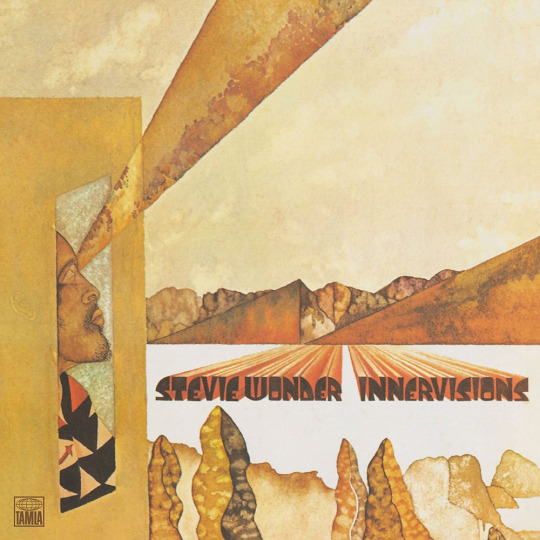
Stevie Wonder - Innervisions
Innervisions is the real start to a more introspective, witty, and socially conscious Stevie Wonder. There are no more sappy love songs and instead politically minded songs like Living For The City or spiritually hopeful songs like Higher Ground are the bread and butter of this record. What Innervisions does do is take the synth bass that was used on Talking Book and ramp it's usage up. The Moog bass gets more usage as the the clarinet and electric piano. Wonder's energy is extremely infectious, it's no surprise that Innervisions spawned four massive hits that all still see play on classic rock radio.
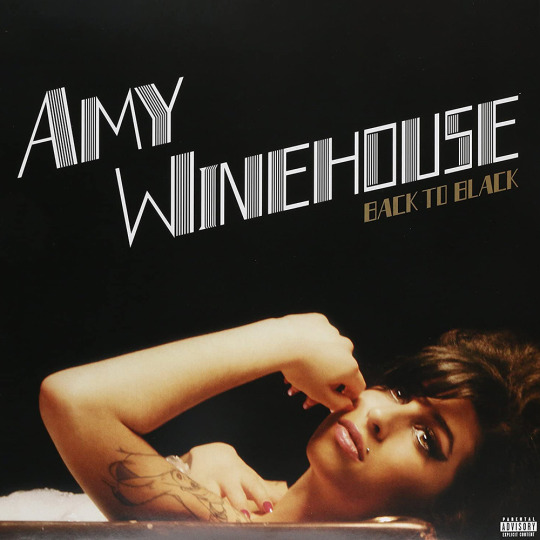
Amy Winehouse - Back To Black
It is very clear that Amy Winehouse could have gone all the way for period accurate recreation of early 60s Doo wop and girl groups had she wanted to. Thankfully she was better than that. The way she blends those classic styles with their modern equivalents beautifully illuminates the evolutionary path of soul and R&B music. Winehouse is backed up by the legendary Dap-Kings which adds to the authentic retro feel, but the lyricism absolutely trends more towards a modern style (I don't think Rehab would have flown in the early 60s). All in all Back To Black is a shockingly unique yet recognizable album that can only be the result of a unique musical vision.
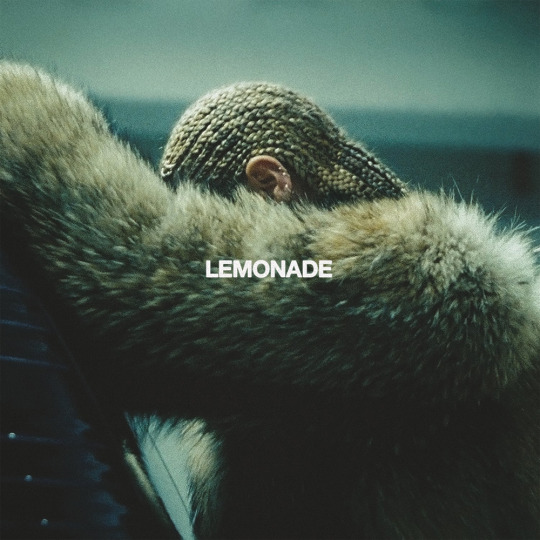
Beyoncé - Lemonade
This album made a huge splash when it came out. It was dropped without any warning and overnight white girls were writing think pieces about the state of black America. The album's main topic is how her husband Jay-Z had been cheating on her, but she takes the simple theme os heartbreak and betrayal and evaluates it through the lens of how the legacy of American slavery has had ripple effects on black masculinity, femininity and relationships. I'll stop there lest this becomes another white girl think piece about Lemonade. Underneath the themes and stuff is one of Beyoncé's most dynamic albums. It is not at all contained to just R&B and delves into rock frequently and Daddy Lessons is straight up a country rock song. I'm not even close to the first person to sing the praises of this album but you're gonna have to hear it again because Lemonade is perfect.
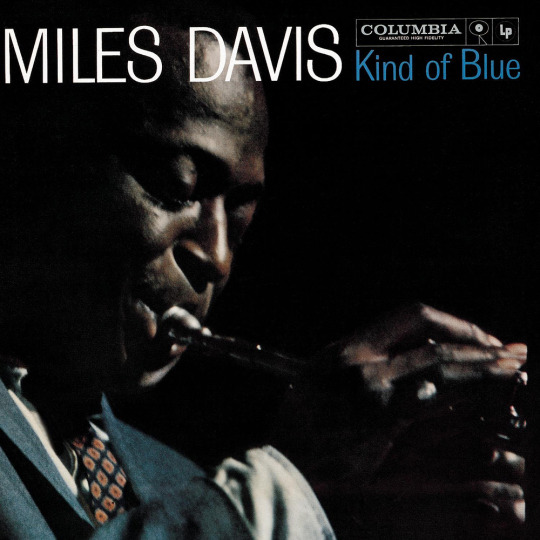
Miles Davis - Kind Of Blue
In many ways Kind Of Blue resembles other post bop albums. But under the surface something incredibly innovative is happening. You see rather than a chord progression to set the key and then a bunch of solos there is... Wait do you guys know about musical modes? Oh. Uh. This is gonna be hard to explain then. Just trust me that the underlying structure of these songs provides the performers with much more tonal freedom than in other forms of jazz without losing the sense of harmonic center. If you are intrigued Google modal jazz at your own risk. Now the performers themselves are some of the best of the best. Miles himself on trumpet, Cannonball Adderley and John Coltrane on alto and tenor sax respectively, Bill Evans on piano, Paul Chambers on bass, and Jimmy Cobb on drums. Each one of these performers is a legend, each one likely to be the biggest name in any other band. And they explore the freedom that the moral form allows them to craft some of the finest solos in the history of jazz. And it's kinda catchy too. I already have the refrain from So What stuck in my head. Somehow one of the most experimental albums also became one of the best selling jazz albums of all time.
#500 album gauntlet#david bowie#talking heads#bob dylan#dr. dre#michael jackson#the beatles#stevie wonder#amy winehouse#beyoncé#miles davis
4 notes
·
View notes
Text
What the Funk?!
Vol 1. Part 1
The Foundation of Vaporwave: SynthFunk Pioneers

Vaporwave has been one of my favorite niche subgeneres of music for years now and its easy to tell why. I'm an old soul that was born to relatively older parents who grew up in the 1970s and whose primes were in the 1980s and 1990s so soul, funk and rhythm runs through my veins in ways my peers were not able to understand and ostracized me for. Once I latched onto vaporwave, my ear was able to detect many samples from songs I had heard growing up and been exposed to new ones. Vaporwave is slowed-down (or what we in the South called “Chopped and Screwed” back in the day) synth funk and new wave tracks from the 1980s and early 1990s set to colorful nostalgic yet futurist aesthetics and anime from around that time.
It is where the past and the future meet in the middle and dance all night.

And it has become one of the loves of my life, discovering vintage music that makes you want to get up, dance and be happy.
Here are some recent favorites that I have been hooked on since the past year or so.
The System
Rhythm and Romance (1989)
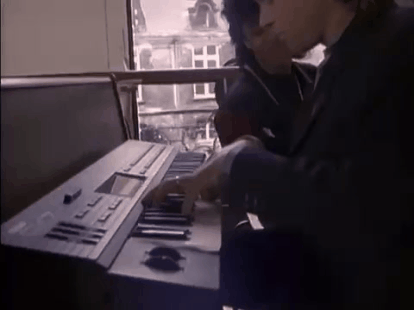
Description: Coming from in my honest opinion perhaps the single most underrated act in funk and R&B in the 1980s, this album fits its title perfectly. Mic Murphy and David Frank are literally on fire in this album even though none of their past efforts left anything to be desired either. They were vaporwave before vaporwave was a thing. To me, their pop flavored, R&B blessed, synth funk sound and angsty romantic lyrics are quintessential vaporwave material. There is no way you can listen to this album and not want to move, not want to groove, not want to have fun. What they lacked in mainstream success, they more than made up for in giving us the textbook definition of a "buried treasure" in multiple projects that I feel privileged to have dug up. Though having already been making music together for the majority of the decade at this point, the duo arguably hit their zenith on this album and the groove tells it.
Standout Tracks:
Midnight Special
Soul to Soul
Have Mercy
Kashif
Kashif (1983)

Description: Here is another synth funk pioneer who didn't get near the mainstream appreciation that he should have. But being primarily a producer, its natural that he stayed relatively behind the scenes but this time he truly let himself shine through some of the grooviest, smoothest synth baselines you will probably ever hear in your life. His programming and keyboarding skills set the tone for later funkateers such as Teddy Riley and Babyface to take to another level in the 1990s. However, Kashif and this project stand as the prototype in its their own right with synth and baselines both ahead of its time and someone just right on time for his era. RIP to the Great Kashif and before falling down the rabbit hole of his productions for others, hear the man shine on his own in this vaporwave masterclass.
Standout Tracks:
I Just Gotta Have You (Lover Come Turn Me On)
Help Yourself to My Love
Stone Love
Loose Ends
Zagora (1986)

Description: In the abundant world of 1980s dance music, the Brits had something to say. And no one made it as loud and clear as the funk, house and R&B group Loose Ends. These folks produced some of the most addictive combinations of House music and synth funk ever heard on record and set the tone for House music to become the penultimate underground genre in the early 1990s with R&B House legends like Crystal Waters and Soul II Soul. Though their discography goes deep, this album presents them at maybe the height of their powers, delivering a world class synth funk album just before hip hop influenced New Jack Swing came the following year to take over the R&B music scene.
Standout Tracks:
Stay a Little While Child
Slow Down
Ooh You Make Me Feel
Shalamar
Friends (1983)
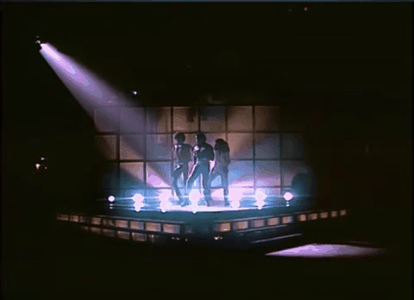
Description: Achieving perhaps the most mainstream success out of anyone on this list, it's easy to see why Shalamar is still celebrated as icons of early 1980s dancefloor scene to this day. In a time where supergroups still dominated the funk and R&B scene, these three forged their own path and released some of the funkiest grooves you will hear from around that time. What made their sound stand out came from their unique mixture of standard R&B and funk with the then-new new wave scene that was coming out of Britain. As a result, their music has stood the test of time and influenced vaporwave mixes produced by both Black and white, British and American lovers of the genre alike. In my opinion, this album is their most solid and serves to represent the danceable, funky feel of the entire 1980s.
Standout Tracks:
I Can Make You Feel Good
Help Me
There It Is
#future funk#funk music#disco funk#funkadelic#soul music#r&b#music#dance music#obscure music#black music#80s bands#80s aesthetic#80s anime#80s music#vaporfunk#vaporwave#the system#loose ends#shalamar#hidden gems#old soul
5 notes
·
View notes
Text
Who Is The Living Queen Of Soul?

You can vote on the Queen on the R&B subreddit here
In particular, the death of singer Aretha Franklin in August 2018 left a gash in the collective cultural psyche of America, a deepening crevice that I believe worsens the longer the title of Queen of Soul music is left uninhabited.
Upon reflection, it becomes apparent that what Aretha’s reign of Soul music most importantly did was to codify the musical textures, vocal phrasing and techniques of presentation comprise Soul music and R&B in general. Since her death, R&B music has given me a curious, rudderless impression, as if waiting for a style to settle upon, or for an emotion clear enough to spin into a groove of sentiment. What the genre needs, is a refocusing of its strengths, that broad-chested arrogance that imagination brings and the polestar of excellence that only a queen can bring. Therefore, it begs the question: who is the living Queen of Soul?
Four candidates come to my mind when thinking of living embodiments of the genre of Soul music: Gladys Knight, Patti LaBelle, Chaka Khan and Mary J. Blige. These women have each created multiple classic Soul, R&B and Disco records, spanning multiple generations, each one with enough lasting resonance to be sampled in prominent Hip-Hop records. They exemplify the genre, but with their own idiosyncratic strong points, and would chart a disparate course for the future of R&B if one was chosen as Queen of Soul over the other.
To many, especially in the American South, Gladys Knight would be their reflexive choice, the Southern Georgia bred voice that, between 1957 and 1987 powered her group The Pips 19 top 20 R&B hits with 16 of those becoming top 20 Pop hits. She imbued a deep pathos of longing on songs “Help Me Get Through The Night,” “If I Was Your Woman” and the classic “Midnight Train To Georgia.” Her church-taut control of her alto voice is the engine of the group's biggest hits, that reign brightest during her Motown years of 1966 to 1973, her languished phrasing falling out of favour by the late Seventies, over-shadowed by Disco and Pop hits, the Eighties only yielding one minor hit for the group with “Love Overboard.”
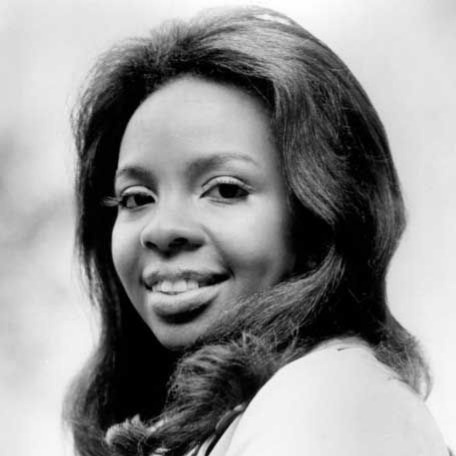
While her Sixties masterpieces have been sampled by the late J Dilla to 2000s rapper Freeway, I’m not sure that her vocal phrasing or songcraft has influence on the current generation of singers, and a choice for her would signal a traditionalist desire to return to the classic sound of Soul music, which might not be such a bad thing all things considered.
Ms. Patti LaBelle has been around just as long as Gladys, and, truth be told, is the voice I am slightly biased towards when I think of R&B. her voice contains a range of voices, from the high-pitched screams of adoration of “My Love, Sweet Love” to the hot scat at the end of “You Are My Friend.” Her voice is a sweet glue that powered her group The Bluebelle to early Sixties hits like “I Gave My Heart To The Junkman” and “The Wedding Song,” which helped to standardise the Rhythm & Blues genre in the process.
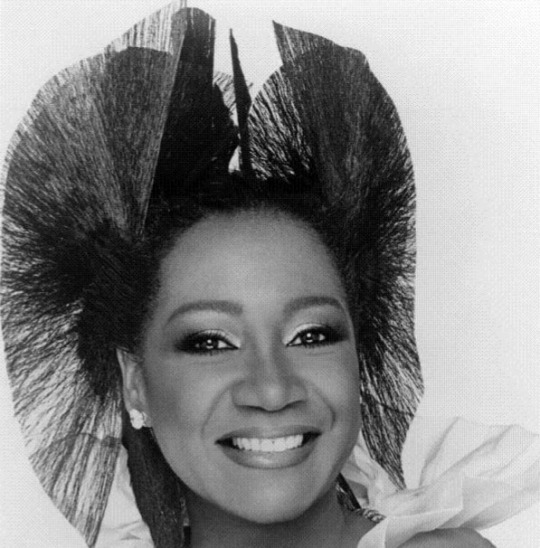
What she is missing is notable songs between 1966 and 1974, when Soul music was in heyday, with hits by Aretha, Stevie Wonder and Marvin Gaye. As a Pop culture figure though, she has endured, her songs covered by Christina Aguilera and sampled on classic Rap songs by Outkast and Nelly. Her voice is instantly recognizable, still a mainstay on quiet storm radio, an elemental thread in the perception of Soul music today. Her ad libs at the end of her hit “If Only You Knew” are legendary, each syllable coming hot and incandescent from her throat into our ears.
If you were looking for a queen that can bridge the old and new idioms of Soul then you would be looking for Chaka Khan. Rising to prominence with funk band Rufus with the number one hit “Tell Me Something Good” from 1974, producing 12 top 20 R&B hits with the band.

As a solo artist she was on the cutting edge of R&B, utilising the latest drum machines and synths, like on number one Pop hit “I Feel For You,” and on “Through The Fire,” famously sampled by Kanye West. Khan’s voice is an electric and druggy funk, perfect for the weird 70s and the messed-up party of the 80s. I love how she phrases sorrow and wonder, with yelps and deep layered harmonies, her wild voice writhing like the untamed want underneath Soul music itself. While she isn’t as big of a household name as others on this list, none of them were as adventurous with their sexiness as Chaka.
From her debut “What’s The 411?” Mary J Blige was a generational talent. The rough-hewn vocals expressed a working class anguish and joy that connected with young Gen X Black women looking for an alternative to Whitney Houston and Anita Baker. With her 1992 number one hit “Real Love and her hit “Be Happy” from her sophomore album, she fit in the pocket of those Hip-Hop drums, threading her runs around them.

Of the women mentioned here, Mary J Blige has consistently been on the charts the longest, a presence though the 90s, 2000s, 2010s and the 2020s with her latest album “Good Morning Gorgeous.” She had early 90s rap trendsetter Grand Puba on her debut album and buzzed-about rappers from the Griselda label on her latest. While she was not active during the 70s zenith of Soul music, Blige knows where her voice is most effective, and always has her finger on the pulse of current music. Could it be she is the queen our 21st century needs?
Aretha’s death hit me harder than I thought it would, for reasons I outlined here, but the vacuum she left has been felt as well when it comes to the state of R&B. Does it return to conservative roots with a play to its true strengths of musicianship and gospel-esque ad libs, or does it embrace the brave new world of technological improvements, production and vocals that create a ‘vibe’ to be mixed into streaming playlists? Well, only a queen can answer that.
6 notes
·
View notes
Text
Best Album of 2023 - Jessie Ware "That! Feels Good!"

Not sure when Jessie Ware randomly decided to become the best artist of the decade but I respect it

By all accounts, the hay days of disco should be far behind us. Back in the ‘70s and early ‘80s, club dance floors sparkled and shined under the illuminating gleam of disco balls; polychromatic floors flashed with a wide array of vivid, eye-catching colors. Mesmerized and seduced by the vibrant, glistening glow that paints the room, and probably under the influence of a shit ton of drugs, people Moonwalked and Macarena’d to Off the Wall and Heart of Glass, throwing their cares to the wind and enjoying the moment. Disco was the perfect soundtrack to losing yourself to the moment; basslines ripped straight from the playbook of funk coalesced with the overwhelmingly rich orchestral aspects of soul and conventional song structures/direct yet breathtaking vocal performances of pop music, usually with lyrical themes of pouring yourself out over a lover. It was music for living for today and not worrying about tomorrow. Blunt and catchy, it’s not difficult to see why disco became such a sought-after sound. But as the era of the disco ball began to fade and the ‘80s began to depart, disco faded out of popularity. It saw a slight renaissance in the early 2000s with the works of Kylie Minogue and Madonna’s Confessions on a Dance Floor, along with the development of nu-disco, which introduced more modern electronic elements into the tried and true disco formula, though that wave of disco revival was short-lived. Aside from that, for nearly three decades, disco fell to the wayside behind other styles of straight-to-the-point popular music like synthpop and dance-pop.

But something magical happened at the turn of the recent decade. A resurgence of ‘80s pop trends began to boil up at the midway point of the 2010s, though really hit a fever pitch in 2019-2021. Some of pop's most substantial names were calling for a revival of the same sounds that populated those glitzy dancefloors all those years ago (i.e. Dua Lipa’s Future Nostalgia, The Weeknd’s After Hours, Lady Gaga’s Chromatica). But the most surprising part of it all was that the one doing it best wasn’t necessarily the most popular- in fact, it was somebody who wasn’t at the forefront of anybodys' minds. Jessica Lois Ware saw a brief moment of success in the early 2010s with hits like Say You Love Me and Wildest Moments, but the hype behind her quickly began to fade as her typical, and honestly quite generic, R&B aesthetic began to run thin. After dawning a new era beginning in 2018 with a couple of singles though not fully getting the chance to flourish until 2020s' What's Your Pleasure, Jessie Ware began to re-invent herself. How? Through that same disco revivalism that was driving the mainstream.
Though what separated Jessie from the crowd is she was not just paying homage to disco aesthetics by sprinkling disco undertones on songs of more contemporary genres like dance-pop or synthpop- instead, What’s Your Pleasure was a full-blown disco album, no holds barred. It wasn’t just a cheap imitation done by an artist desperately yearning for commercial success, it was evident by the musicianship displayed on What’s Your Pleasure that it was an album built out of love and care for disco. Back-to-back-to-back quality that harkens back to the undeniable grooves of decades past.
That! Feels Good! is not a sister album that merely treads the same ground as What’s Your Pleasure; instead, it feels like an extension of that sound. While Jessie’s vocals on What’s Your Pleasure typically feel a bit restrained to emulate a feeling of sensualness, this record really feels like Jessie’s freeing herself with a more assured and expressive delivery. The luxurious, more maximalist, and even more expansive instrumental palate- bringing in lush, soaring orchestral sections that feel even larger than the orchestral moments on What’s Your Pleasure, flashy brass instrumentation, and influences from house music aplenty- take on a totally separate strand of disco also deviates That! Feels Good! from its predecessor. The more overtly sexual energy That! Feels Good! has compared to any of Jessie’s other material is also quite notable. As many will take notice, That! Feels Good!’s lyrics carry a lot of sexual energy, which are topics deeply tied to the genre of disco. Like disco legends such as Donna Summers that paved the way for her, she marries erotic, lustful themes with more nuanced, lovey-dovey romanticism. This right here is Jessie Ware’s horny album.
That sexual energy is channeled best in the listener’s first taste of the album, the title track, a song about unloosing yourself by putting your responsibilities to the wayside. An undeniably punchy and irresistible bassline akin to Stevie Wonder’s most powerful cuts, bombastic horns, and an ensemble of vocals sexually moaning out the album’s title at the onset of the track, which the artist herself has stated she included to stimulate the feeling of a musical orgy, punctuate Jessie Ware’s vocal elasticity as she does parkour from one melody to another, seducing the listener into a hypnotized state which forces them to bop their head up and down with her gorgeous voice. Vocal layering causes Ware’s vocals to swirl and spiral around your speakers as they tumble over each other, creating this oddly overwhelming feeling that makes it nearly impossible not to groove along to the song. It all culminates in a sexy-ass trumpet solo that will surely make you smile if the rest of the song hasn’t yet.
Free Yourself is yet another liberating song about doing exactly what the title indicates. Cascading pianos reminiscent of Europop circa ABBA and Diva House in the vein of Beyoncé’s Break My Soul are intertwined with a lavish orchestral section backing the song’s emancipating chorus. Vocally, Jessie is really letting it all out here, adding to the song’s themes of unbinding oneself from the restraining shackles of reality. It’s her most ferocious, fiery performance to date; fervid performances are what help differentiate this album from What’s Your Pleasure more than anything else. Whereas What’s Your Pleasure felt like Jessie Ware trying incredibly hard to be the shit- which is not a knock on that masterfully refined record, I actually feel as if it allowed for a more mature, subtle, and controlled album- That! Feels Good! feels like Jessie Ware knows she is the shit. Confidence is key; her dramatic vocals glide over the dazzling assortment of strings and brass on These Lips, and the charmingly child-like “La La La La” refrain on Pearls is sure to capture the listener's ear as it fades in and out with kaleidoscopic color. Yet that newfound confidence also comes instrumentally with Jessie taking an everything-but-the-kitchen-sink approach to What’s Your Pleasure’s grandiose orchestration; the pounding, bouncy, and consistent house of rhythms of Freak Me Now along with the glamorous trumpets that underscore Shake The Bottle carry just as much flashiness as Jessie’s own performances, the ladder of which has captivating Talking Heads influences aplenty encoded into its DNA.
I cannot end off this review without giving a nod to Begin Again, perhaps the best Jessie Ware song to date. It’s That! Feels Good!’s most unabridged and uncompromised ode to disco; at five and a half minutes, it’s a multifaceted, wild homage that brings the listener back to years of those classic ‘70s dancefloor anthems. Drums heavily influenced by the music of the Brazilian culture, more specifically the sound of Samba, a tropical-sounding piano bridge, and celebratory horns/eloquent strings populating the background all work in tandem to create handily the album’s most infectious grooves. Though Jessie Ware’s vocal splendor delivered in this song really steals the show, it’s truly something to behold. It is her most dynamic and compelling vocal performance yet, perfectly balancing euphoric highs that contain layers of vocals tumbling over one another, each one fighting to be the most noticeable in the mix which makes the song feel all the more untamable, and more lowkey moments where the song calms down while Jessie croons over some more subdued instrumental sections, all before reaching its monumental crescendo where every instrumental and vocal element that has been building up coalesce in an intense explosion of groovy magnificence. Begin Again really captures the spirit of the entirety of That! Feels Good!; it’s a collection of instrumentally dense, lyrically carefree songs where every track sounds like it has had hours on top of hours spent on it just to make sure it’s as thoughtful of a tribute to the sound of disco as possible. Stop being that old pretentious asshole for a minute and enjoy some fun music for once; That! Feels Good!’s sure to get a couple of good head-bops out of even its most reluctant listeners.
Favorite Tracks: That! Feels Good!, Free Yourself, Pearls, Hello Love, Begin Again, Beautiful People, Freak Me Now, Shake The Bottle, These Lips
Worst Track: Lightning (if I had to pick)
youtube
youtube
1 note
·
View note
Text
Ranting and Raving: "New Guru" by Vulfpeck
youtube
Did you ever hear the one about the eight guys that walked into a sauna all wearing silly red hats? So, these eight guys all walk into a sauna and then they start playing funk music...
That's the closest thing to a punchline that I've got.
If you're unfamiliar with Vulfpeck, let me catch you up to speed real fast. They're a funk outfit founded in 2011 by multi-instrumentalists Jack Stratton and Theo Katzman, keyboardist Woody Goss, and bassist Joe Dart. They had a meteoric rise through their impressive musicianship, humor, and cleverly shot and edited music videos on Youtube, most of which are just captured performances of the band playing their songs in what looks like your grandmother's living room (see: their video for the song "Dean Town".) Over the years, they've added to their roster with guitarist Cory Wong (not to be confused with the Vulfpeck song "Cory Wong") alto sax player Joey Dosik, and sometimes lead singer Antwaun Stanley. In their time, they've released several EPs, six albums, and a live album of their sold out show at Madison Square Garden back in 2019. In short, they've been groovin' for quite a while and their status as funk masters is nothing to scoff at.
On November 25th, 2022, after a roughly two year hiatus and a slew of side projects featuring the various members, the Vulf pack finally reconvened–with the aforementioned silly hats and in a sauna of all places–and began posting videos of them playing songs that would eventually be found on their latest album, Schvitz, which was released on December 30th. They are all worth your time, but one song on the album in particular gripped me the first time I heard it and is still just as wonderful after the three-hundred and eightieth time. That song would be "New Guru."
This song has claimed the top spot for my favorite Vulfpeck song and it's the one I plan to use to introduce people to this group for the rest of time.
Contrary to what you might think, the haze you see in the video (posted above) isn't coming from the sauna. It's actually from the heat coming off the groove of this song. Everything about this just hits. It's groovy, it's funky, it's fun, it's got a bit of disco in there that makes this fun to dance to. It's got all eleven herbs and spices and even some of the ones they don't tell you about. It's tight, it's concise, it's utterly fantastic and every single member of this band once again reminds you why they're some of the best out there right now.
I think it's appropriate that this song came out when it did (December 8th) because that's around the time everybody starts seeing an onslaught of corny social media posts that talk about all the changes and possibilities and good things people are manifesting for with the start of the new year. Most of those end up being complete bunk and I'm aware of that cynical view. We make New Year resolutions we know deep down we're never going to fully commit to keeping and after about a week into January the excitement of the new year dies away and we settle back into the same old dull routine. Once more, from the top.
Then this song came along and rattled my cage. I heard this song for the first time and I threw that cynical view into the garbage bin. It was mostly based on the lyrics for this song, which are some of the best that the band has ever presented. The lyrics fit the overall themes and ideas that you find creeping around at New Years, welcome and embrace the new, throw away and reject the old and broken. "I gotta say no no (no no) / To those old clichés / I gotta say go, go (Go, go) / To this brand new way." For a song on an album that came out two days before the ball dropped, I imagine the ideas presented on the song weren't lost on the band.
But it isn't just the lyrics that are great, it never truly is. To me, a song's message becomes great when it's in the hands of a performer that can really sell it. And Vulfpeck has that with their secret weapon: the stellar vocals and dynamite performance that Antwaun Stanley delivers on this track. Stanley has been the featured vocalist on many of my favorite Vulfpeck songs ("1612" and "Funky Duck" are two good ones that showcase just how good he is) and now I get to add his work on "New Guru" to the top of that list, because I'll tell you right now, he makes this entire song really shine.
This is the closest Vulfpeck will probably ever get to taking you to church. In a strange way, the sauna robes give off the look of makeshift church choir robes and Antwuan's delivery has the feel of an uplifting song you might hear in a church service... if that church presented music that was solely devoted to the funk. To me, the bridge and the third verse is where I get that vibe the most. Here they are in full:
When there's wrinkles in your sleeves
You take off your shirt and you steam it
When there's dishes piled high in the sink
You get out the sponge and you start cleanin'
All the menial tasks distract from the fact
That there's a hole in your soul like a wall has a crack
You put off the repairs, pretend they're not there
And you failed to address the mess 'cause you're scared
So you look for a source to carry the weight
To lighten the load of a soul gone astray
To wake you up and get you through the day
To cut through the brush, show you the way
These lyrics are a bit silly and would sound dreadfully corny if left in the wrong hands, but thankfully, they're in Antwuan's hands. He presents these words with such authenticity, such genuineness, such love and care and grace that you buy what he's selling. I did the minute I heard it. The use of something silly like putting off household chores juxtaposed with all too real feelings of facing things head on and finding fulfillment in your life just creates pure magic. It's about seeking salvation and hopefully finding it. It also explains why people would get tricked into following false leads and con artists that offer nothing of real value. Everybody wants to be shown the way and find the answer to their plights, regardless of what they might be. If "patience has left you feeling miles away" or you found out you were lied to or you found that "hope is a fugitive that's on the run," Vulfpeck offer one simple answer: "Find you a new guru."
But, if you'd rather have a comparison that has no ties to religion, Antwuan performs this song similar to the way Maurice White from Earth, Wind & Fire delivered messages tinged with spirituality. The lyrics definitely fit the kind of message Maurice would've enjoyed and hyped up, the chorus especially. Hell, the groove on the chorus is pure Earth, Wind & Fire at their funkiest. It's such an infectious earworm (which is fitting, because the track before "New Guru" on Schvitz has a song sung from the point of view of an earworm, brilliantly called "Earworm".) It's a repetitive chorus, but a damn good one nonetheless. You hear it once and you just keep singing along with it (and keep singing it long after you've heard it.) The harmonies between Antwuan, Theo Katzman (who is drumming on this one), Joey Dosik, and the song's co-writer Jacob Jefferies all blend well together and just add to that infectious quality. It fucking hits and it's just such a fun song that's so well done, plain and simple.
One final aspect that I think adds flavoring to this song is Vulfpeck's trademark humor, which is here on full display, both in the video and the song itself. The silly red hats that look like the famous cone hats from DEVO's "Whip It" video were already mentioned, but other little bits include the video choosing odd moments to zoom in on things (like the close ups of Antwuan's face about 50 seconds in, Joey singing background vocals all the way in the back at 1:14, the camera following only Antwuan's hand at 2:29, etc.) and Cory Wong and Joe Dart both sneaking in the famous riff from "Dueling Banjos," of all things, during the third verse (it's at 1:58, Cory himself has a comment on the video that just says "dueling banjos quote made the cut." Ridiculously smooth.) However, the funniest part, arguably the part that keeps me coming back, is near the tail end of the song, when Antwuan asks the band for a key change ("Come on, y'all, take it up for me") only to immediately go back on that ("My bad, bring that down, bring that down.") It's such a little thing, but it puts a smile on my face and it makes me laugh every time I listen to this song. To make it clear, this is both on the album and video. The video adds even more humor by having Antwuan give Theo a thumbs up after the band brings it down, as if they're saying to each other, "We got it back on track now."
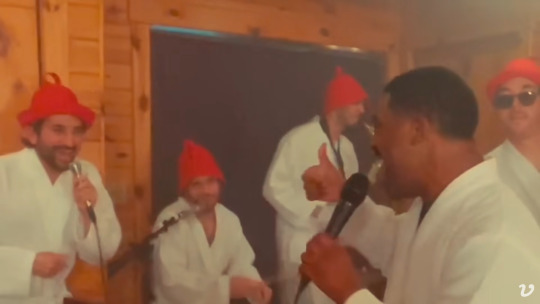
What Vulfpeck have done on "New Guru," and Schvitz as a whole, is something special. The band has provided such a fun and feel good song that feels right for this moment in time. Ever since the 2020s started it feels like we've been living with nothing but darkness (and there's been a lot of darkness these last few years...) but the pack are back to remind us that there is still fun to be had. We can still look towards the new with bright eyes and anticipation. We can find new hope and new things get excited about that will keep us going and help us find the answers we seek.
If you were looking for something uplifting to start off 2023, it ain't gettin' much better than this. What "New Guru" provides is a wonderful lesson and a damn fun song to keep us going through continued darkness.
So say no no to those old clichés and say go go to the brand new way. May the new gurus you find in 2023 show you the way and put the light back in your soul. And above all else:
Take care of one another. It's gonna be another crazy year.
5 notes
·
View notes